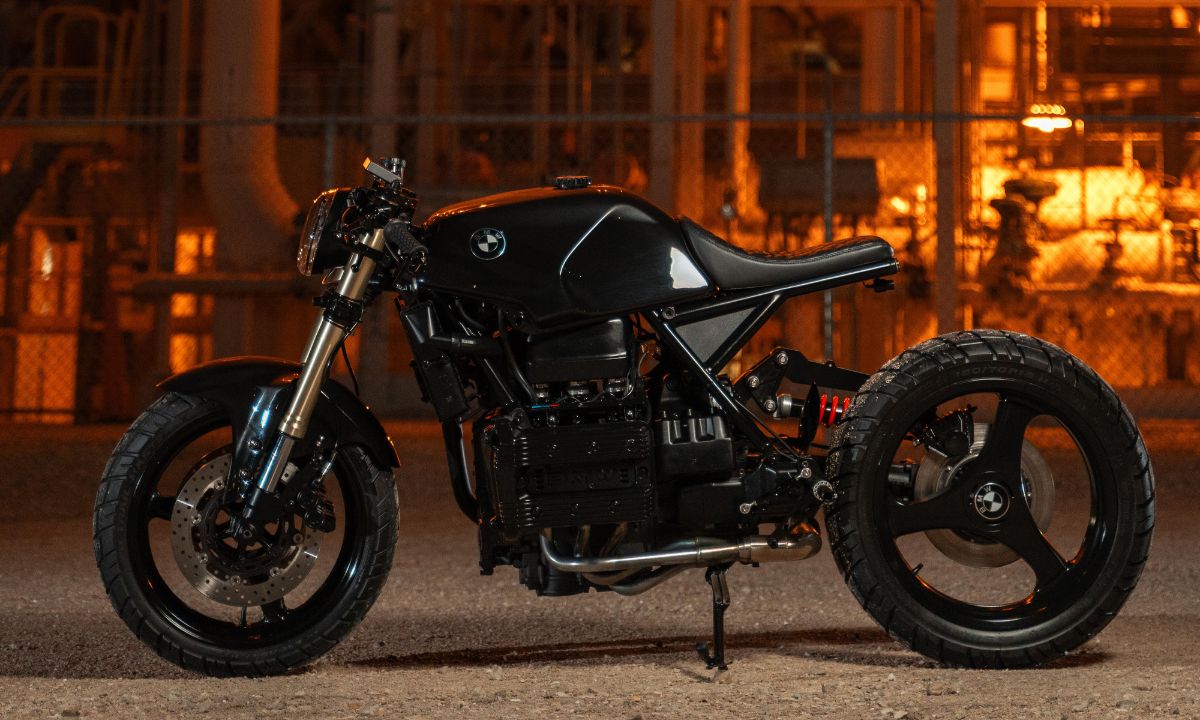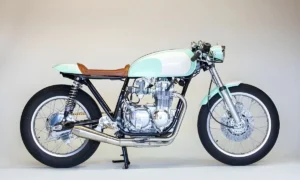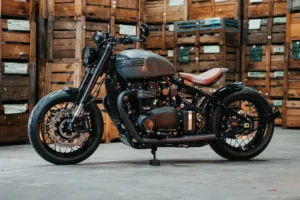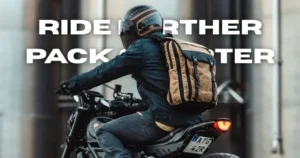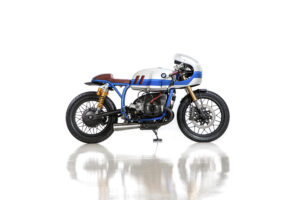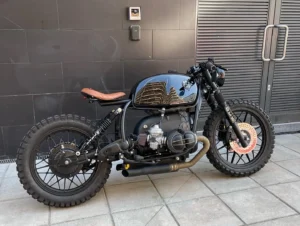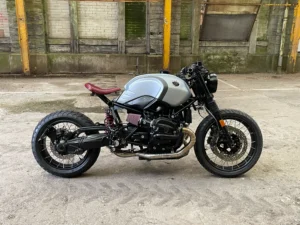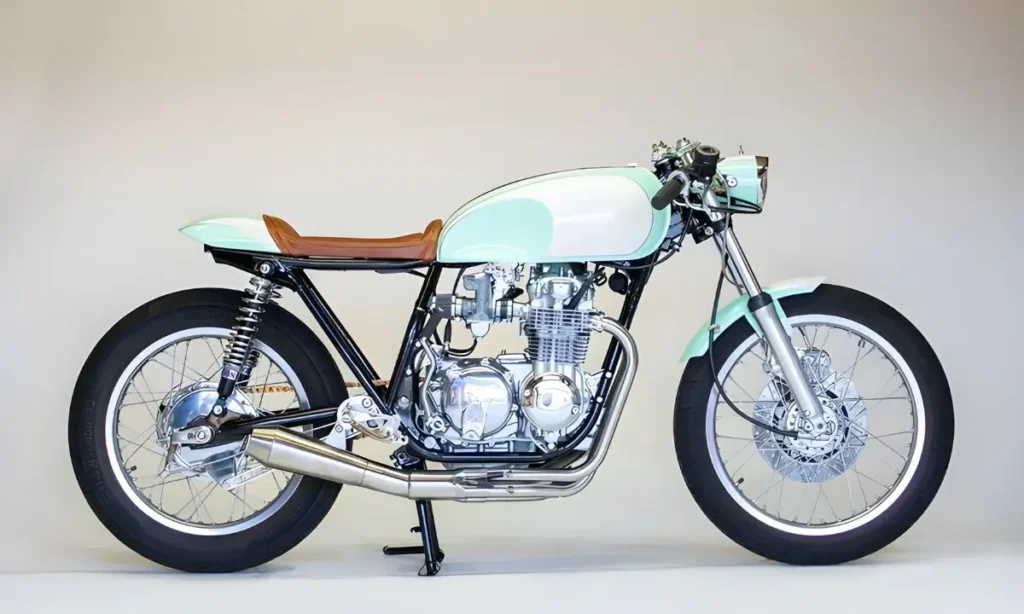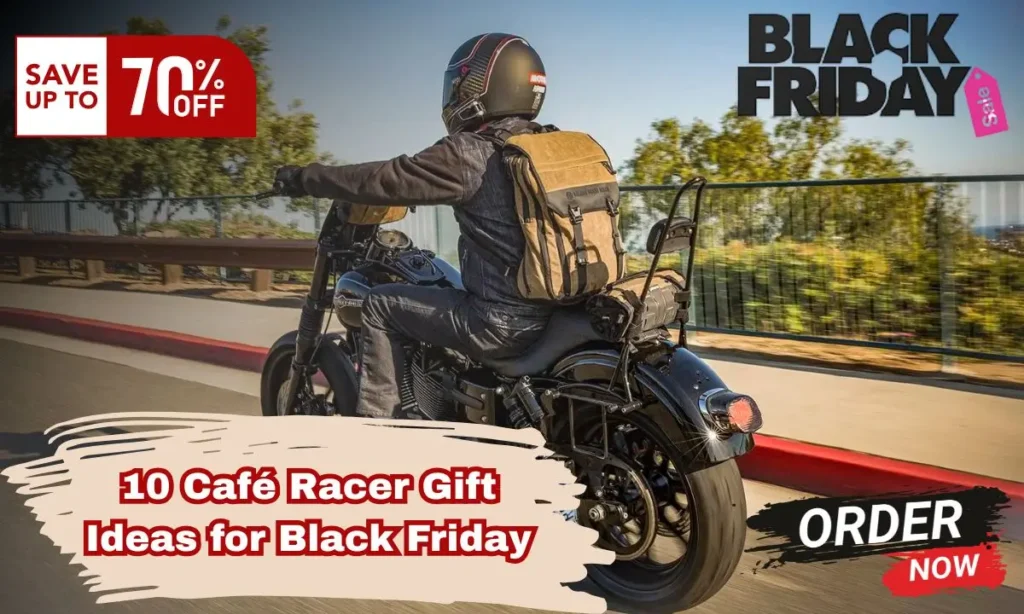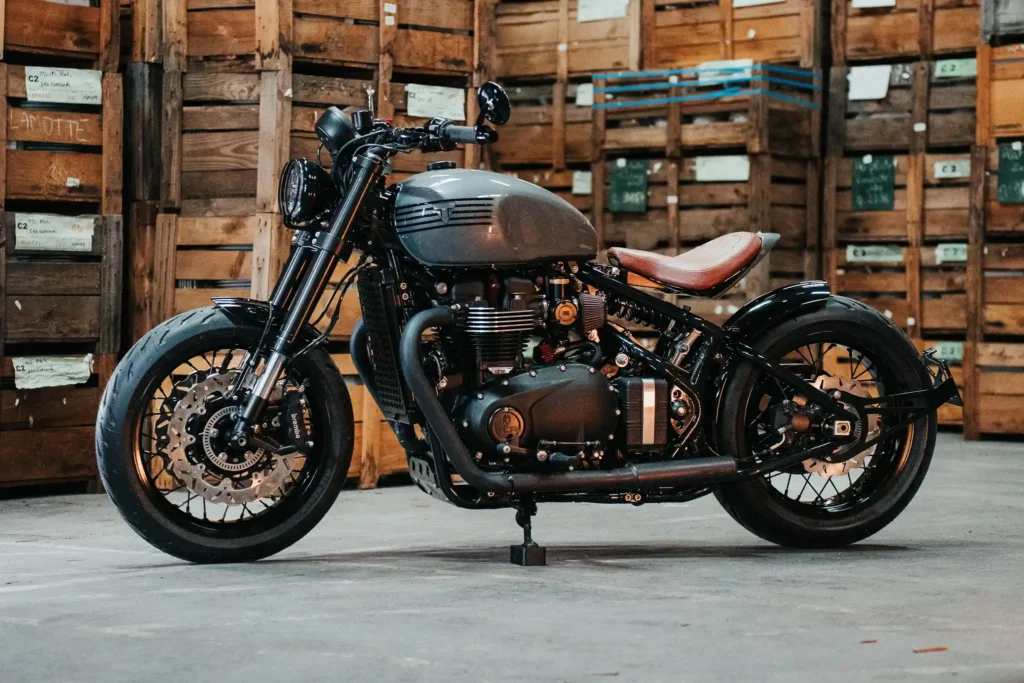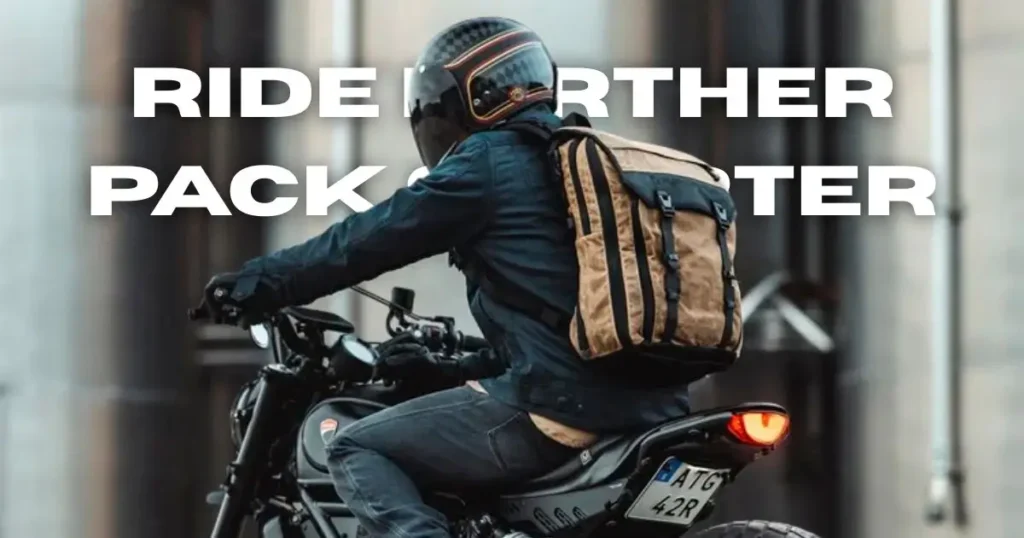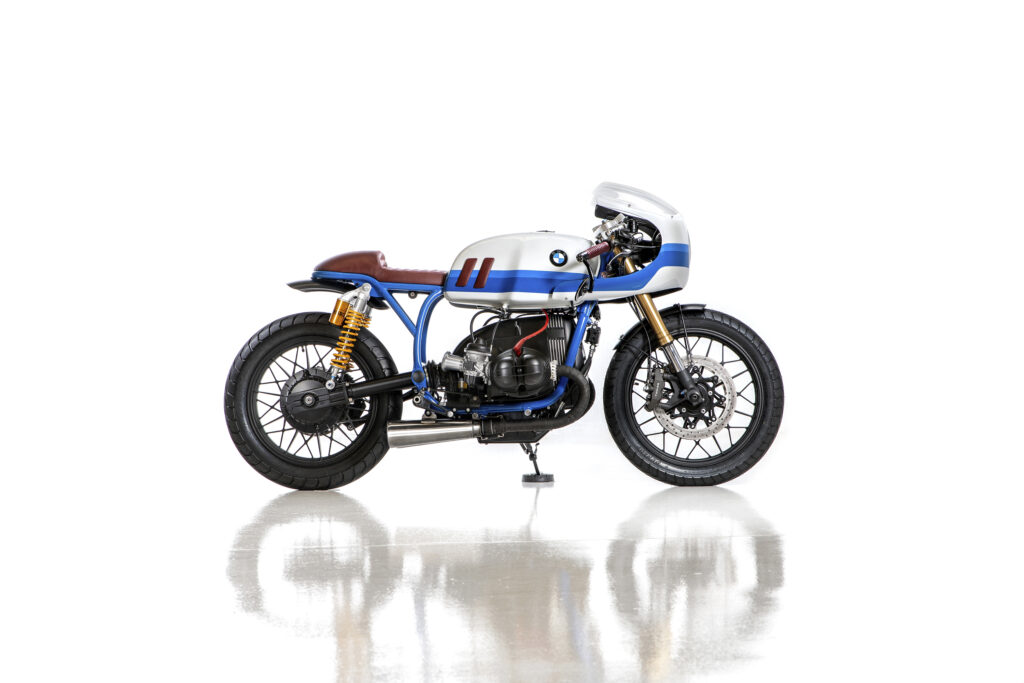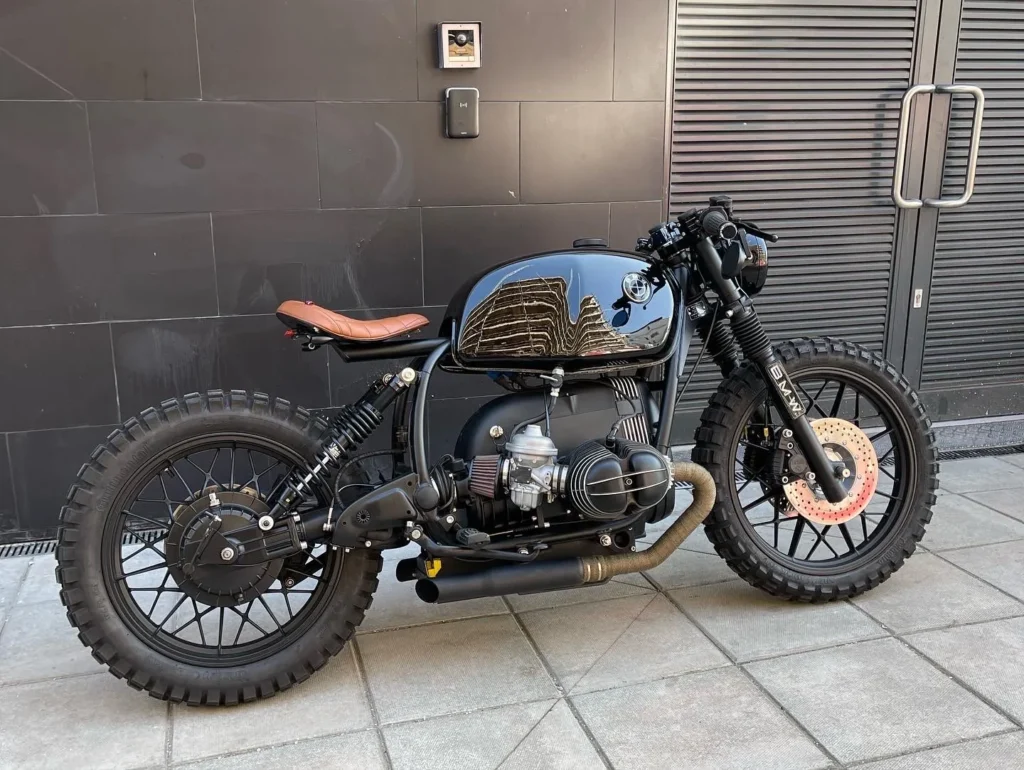Table of Contents
ToggleArnas is a custom motorcycle builder based in Illinois. Cyberpunk is one of Arnas’s full custom builds, created in a style similar to his earlier bike, Shadow.. His earlier build, a 1985 BMW K100RT café racer, followed a similar dark theme and gained attention for its clean design. For this new project, he started with a 1992 BMW K75, acquired in April 2024 and completed in February 2025. He kept the original engine but upgraded nearly every part around it. The build includes a new suspension system, modern electronics, and a full blackout finish.
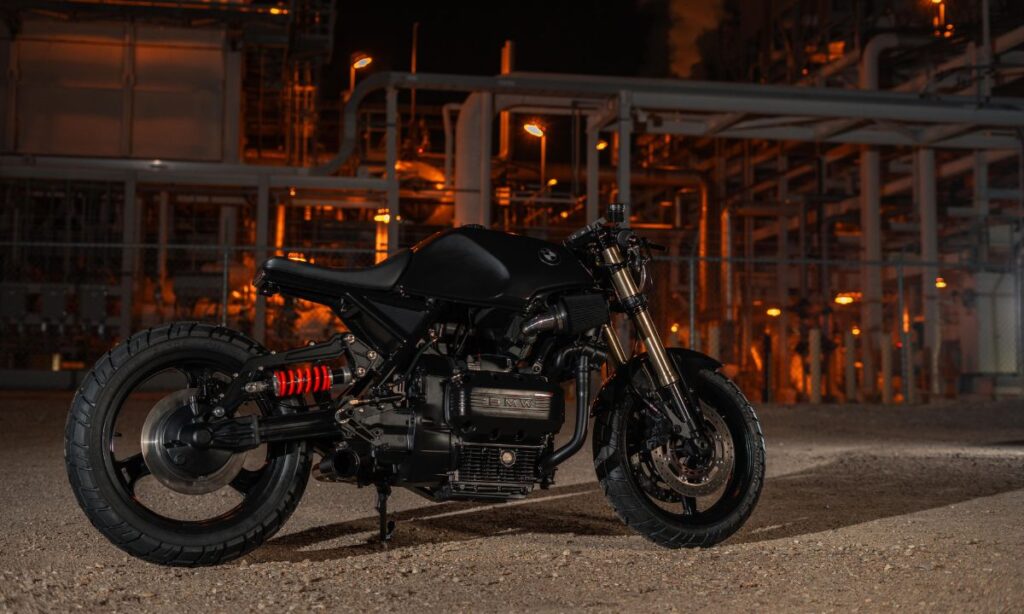
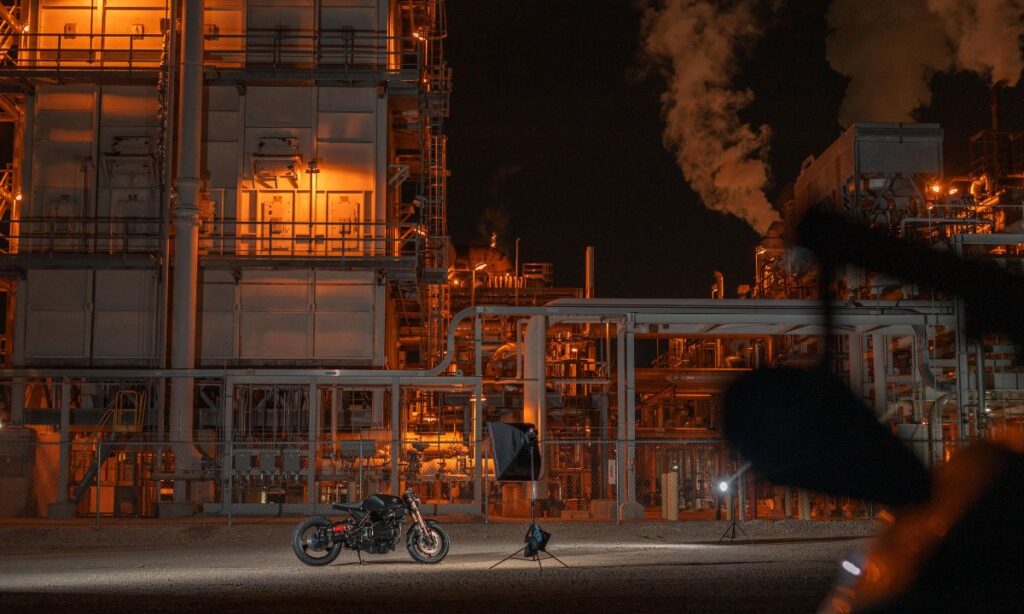
This version builds further on his older Shadow build. It features a Yamaha R1 front end, a horizontal monoshock, and a touchscreen dash with cameras. The result is a clean, low-profile café racer that combines modern upgrades with the simple, straight lines of the original BMW K-series.
Base Bike Background: The BMW K75
The 1992 BMW K75 was built for durability and smooth riding. It uses a liquid-cooled 740cc triple engine. The motor runs with low vibration and delivers steady power. A five-speed gearbox and enclosed driveshaft complete the drivetrain.
This model became popular for touring and daily riding. It offers long engine life, easy maintenance, and strong build quality. The K75 is also lighter and more compact than the K100.
Its frame is simple and clean, which helps during customization. Builders often choose it for projects that need both modern upgrades and classic design. Arnas picked this bike for its strong engine, stable structure, and open layout.
Builder’s Vision: From Shadow to Cyberpunk
Cyberpunk is one of Arnas’s full café racer builds. It continues the blackout style first seen on his earlier bike, Shadow. The new project, named Cyberpunk, takes the same design approach further. The goal was to keep the dark café racer appearance but improve the details and performance. He wanted the build to look clean, feel light, and ride sharp.
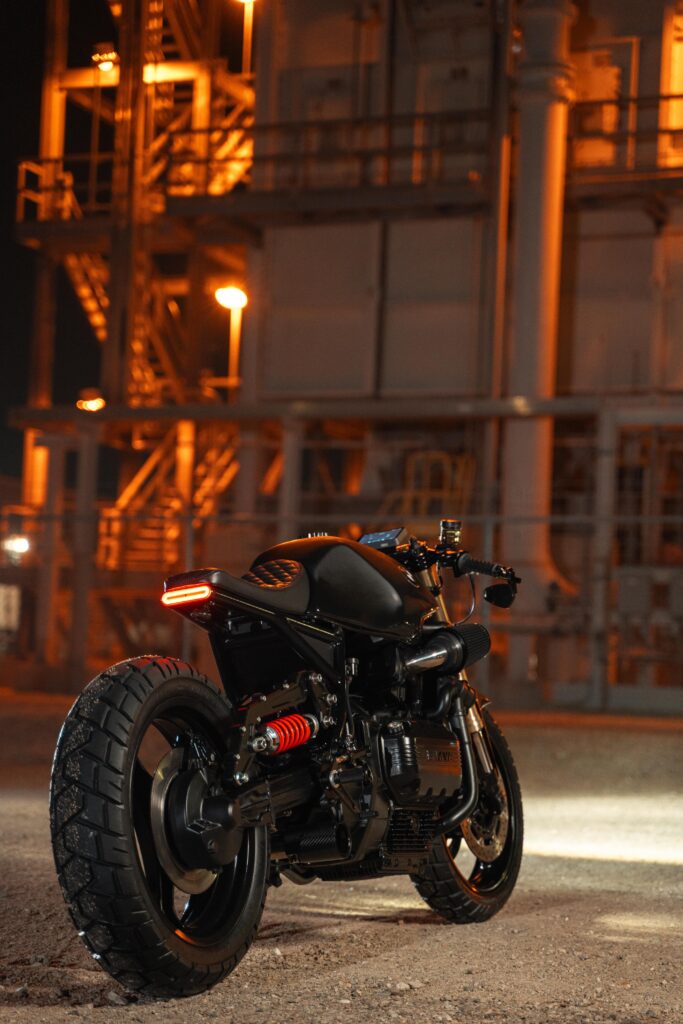
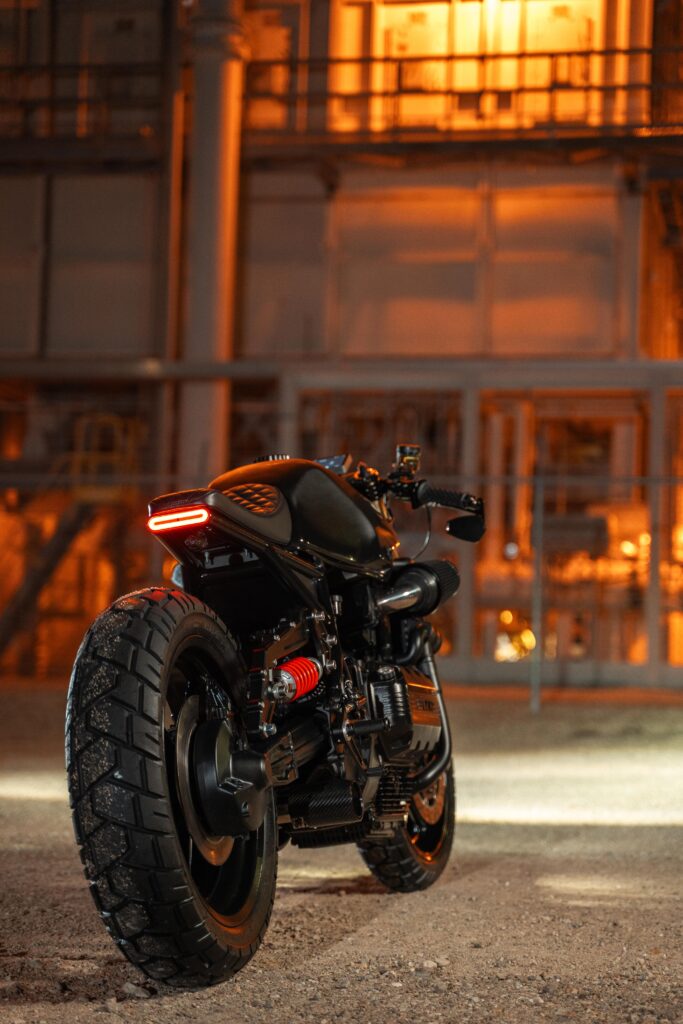
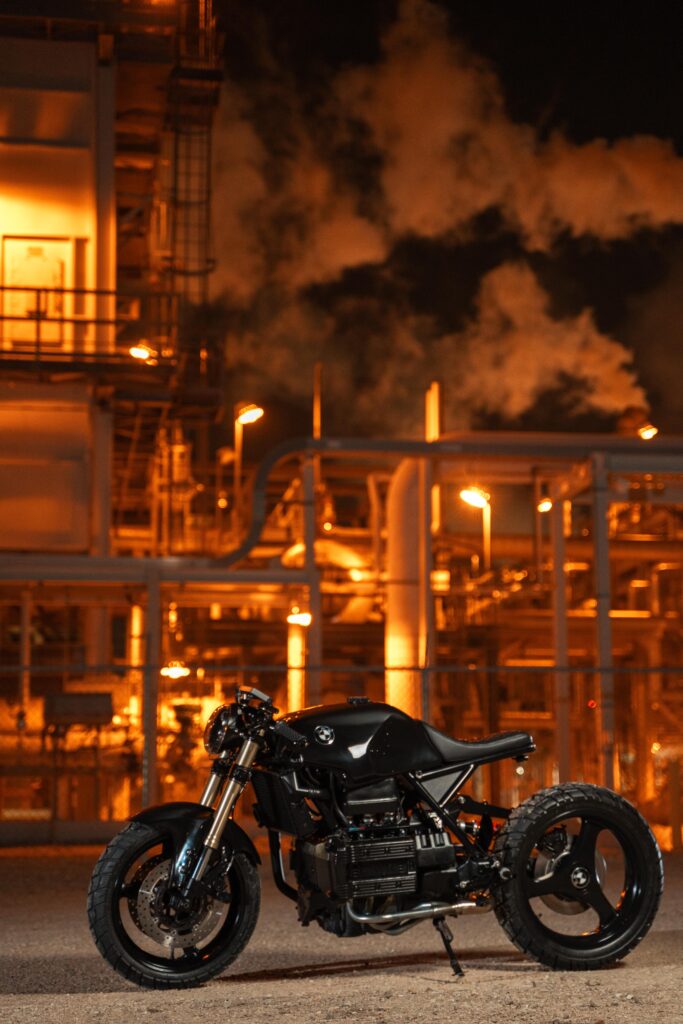
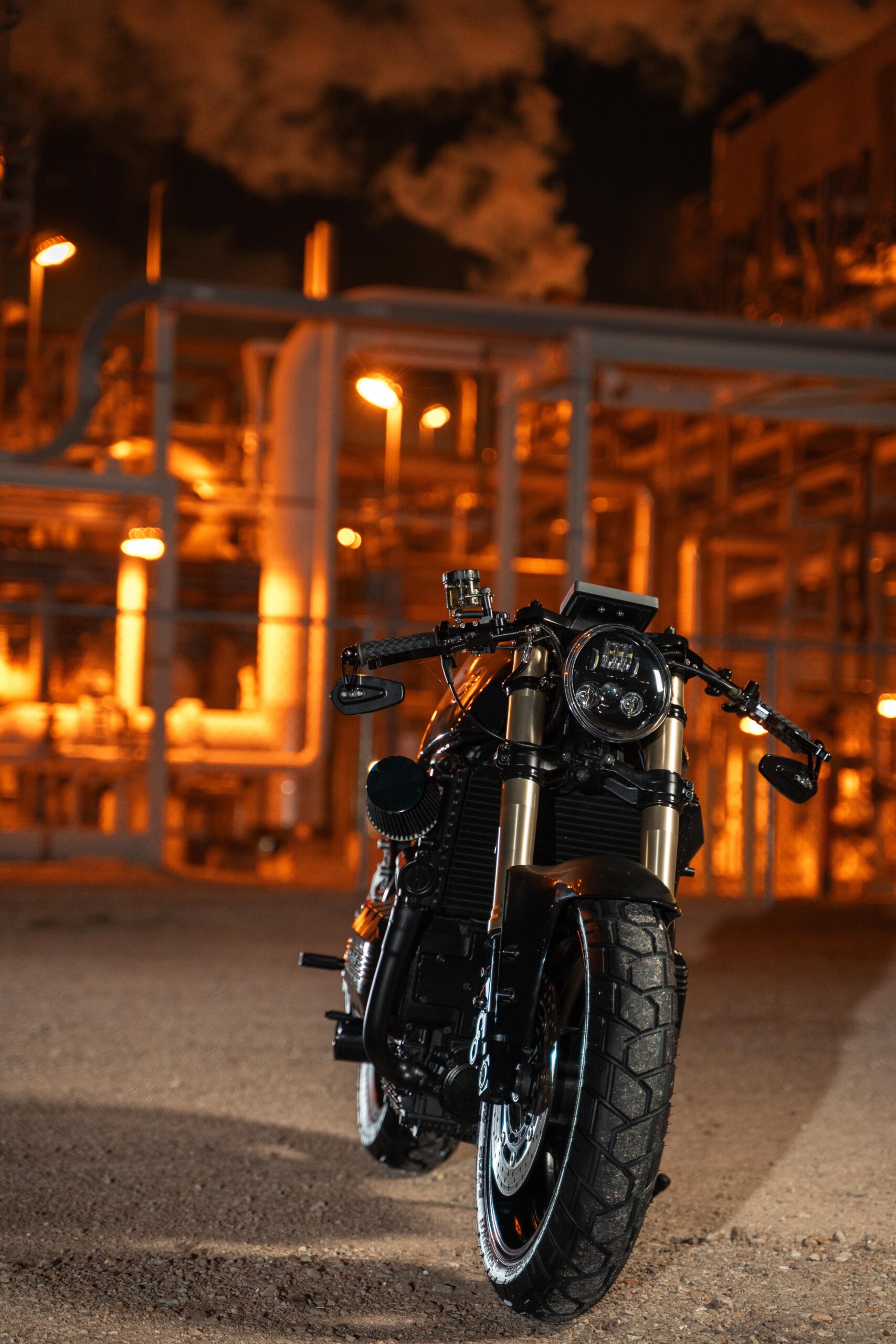
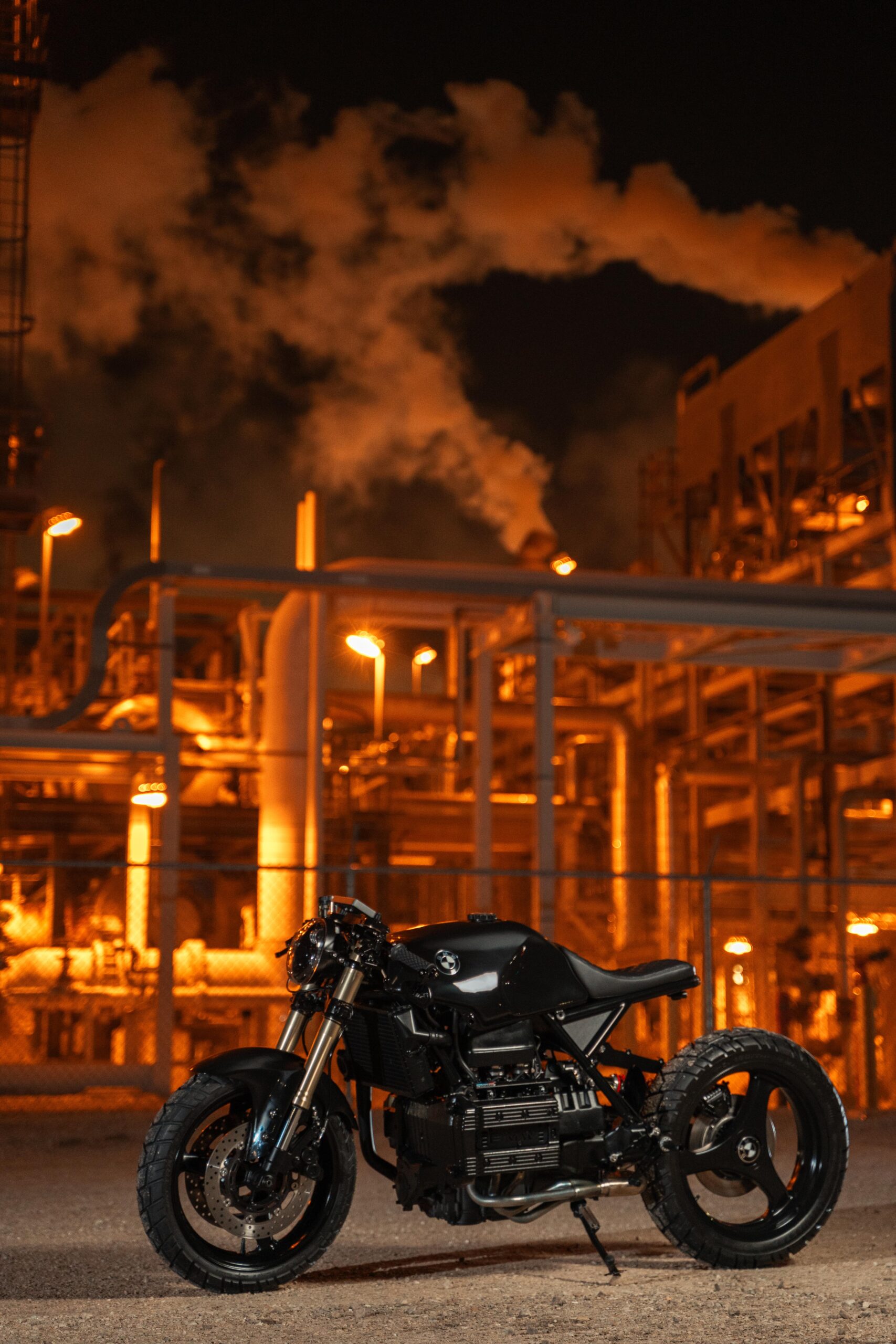
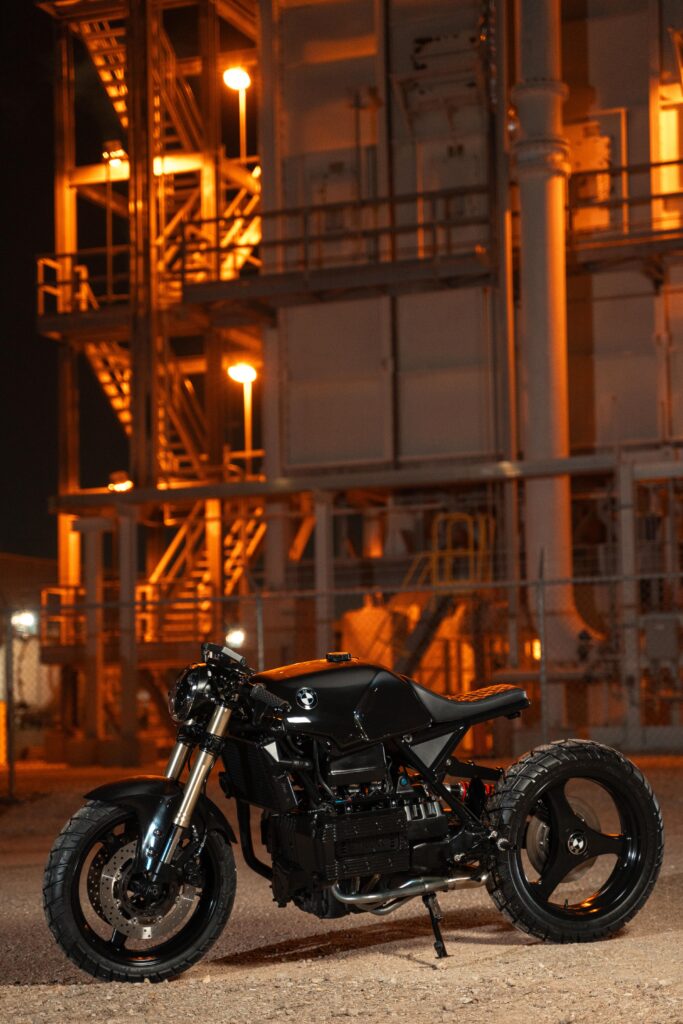
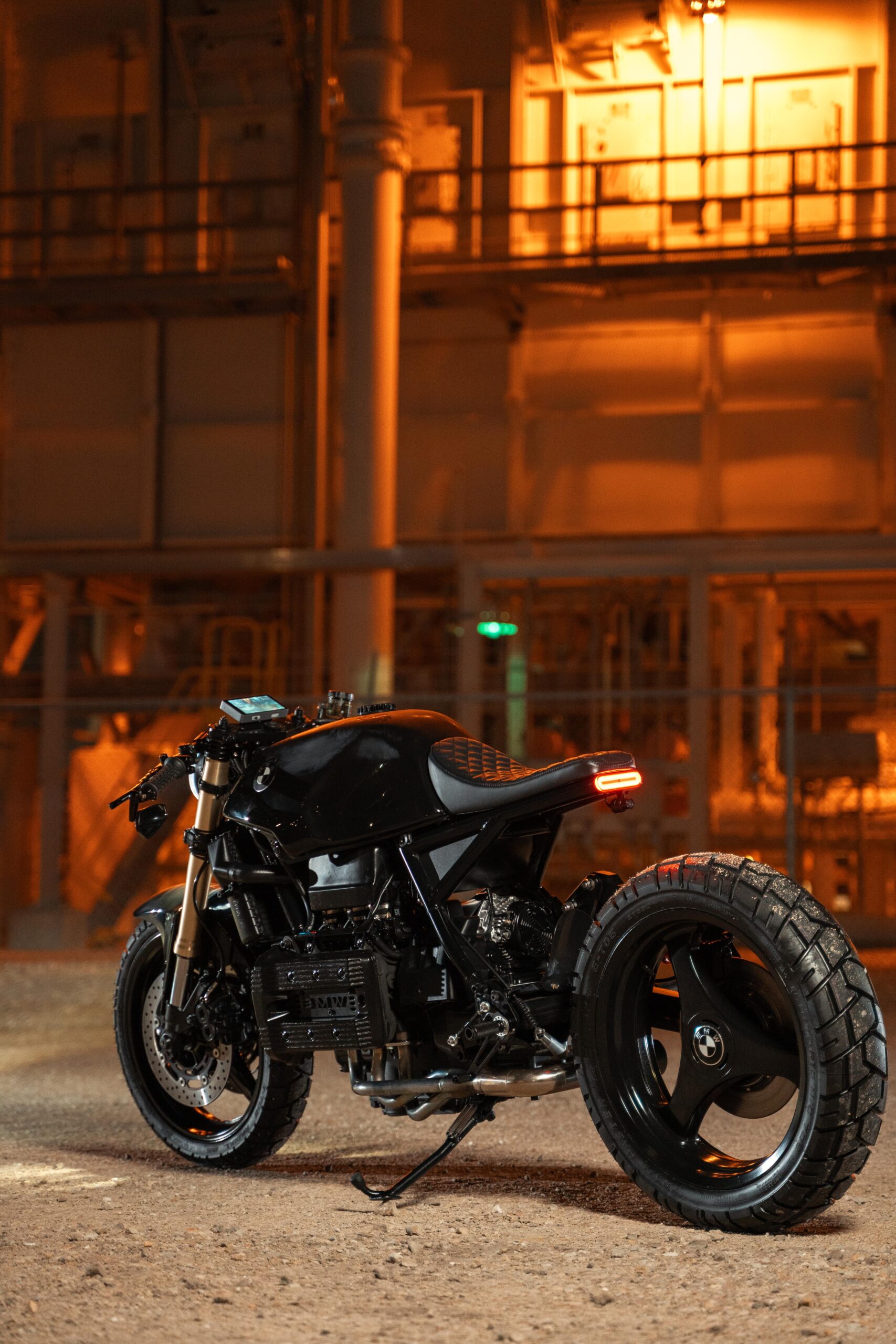
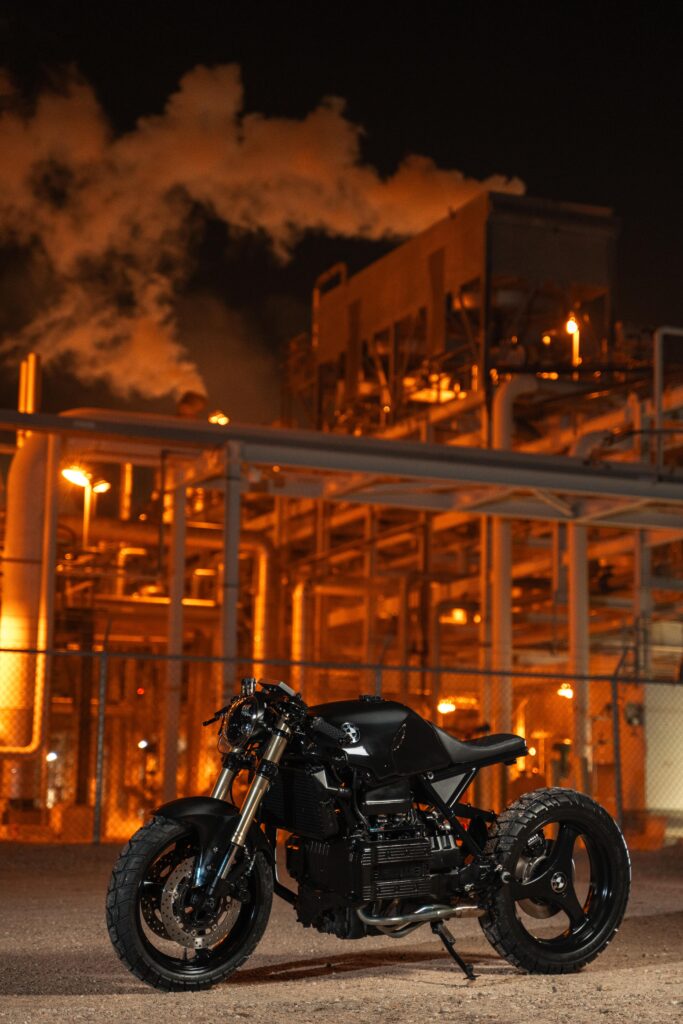
He added modern features like front and rear cameras, keyless ignition, and a touchscreen display. At the same time, he kept the basic frame lines and riding shape of the original BMW K75. The result is a machine that feels both new and familiar. Every part was chosen to support that clear idea.
Custom Frame & Body Modifications
The frame of this K75 was reshaped with a welded-on rear subframe. It supports a solo seat and creates a cleaner tail section. The main frame was sanded and painted in matte black epoxy for a smooth, even finish. This base matches the rest of the bike’s blackout look.
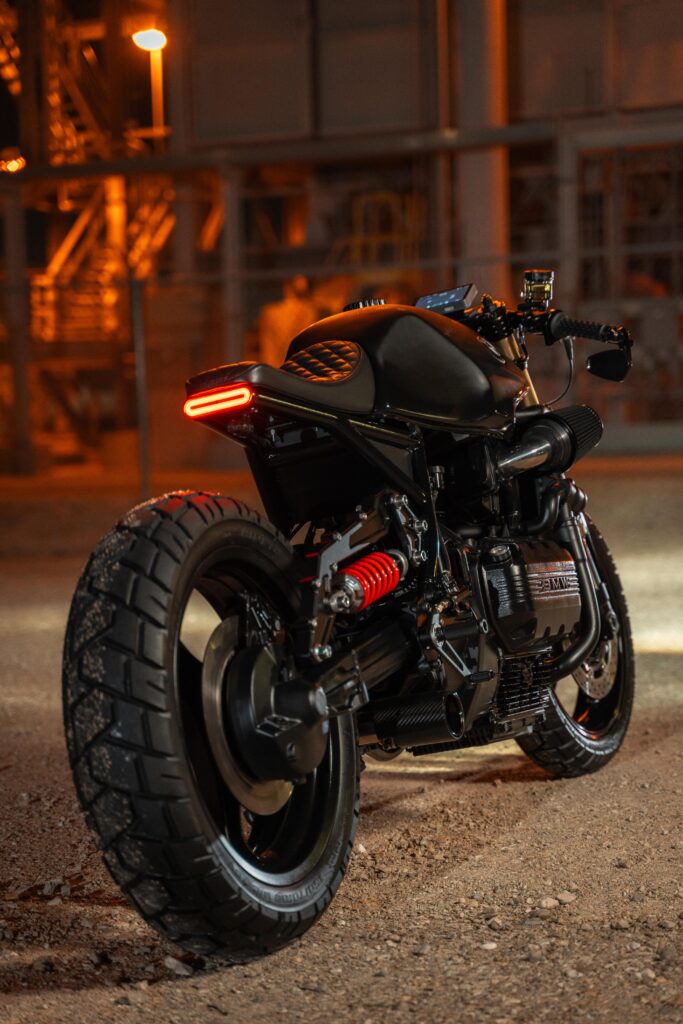
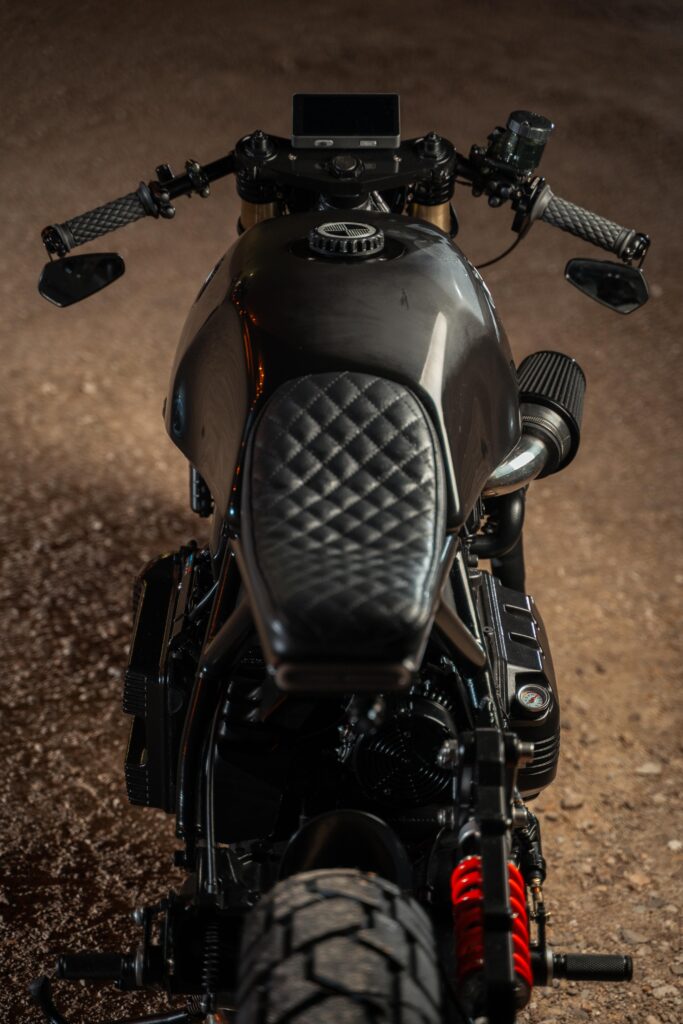
The bodywork includes a hugger-style rear fender that sits close to the wheel. It gives protection and fits the tight rear profile. The seat was built with black diamond-stitched leather. Its design follows the café racer style and matches the handlebar grips.
Other changes include blacked-out BMW badges and a custom aluminum gas cap. These details keep the design focused. Every part works with the shape and style of the build.
Front & Rear Suspension Overhaul
The front suspension comes from a Yamaha R1. It includes adjustable forks, new fork oil, and upgraded fork seals. The triple clamps were modified to fit the K75 frame. This setup lowers the front and brings the wheel closer to the engine. It improves both the stance and the handling.
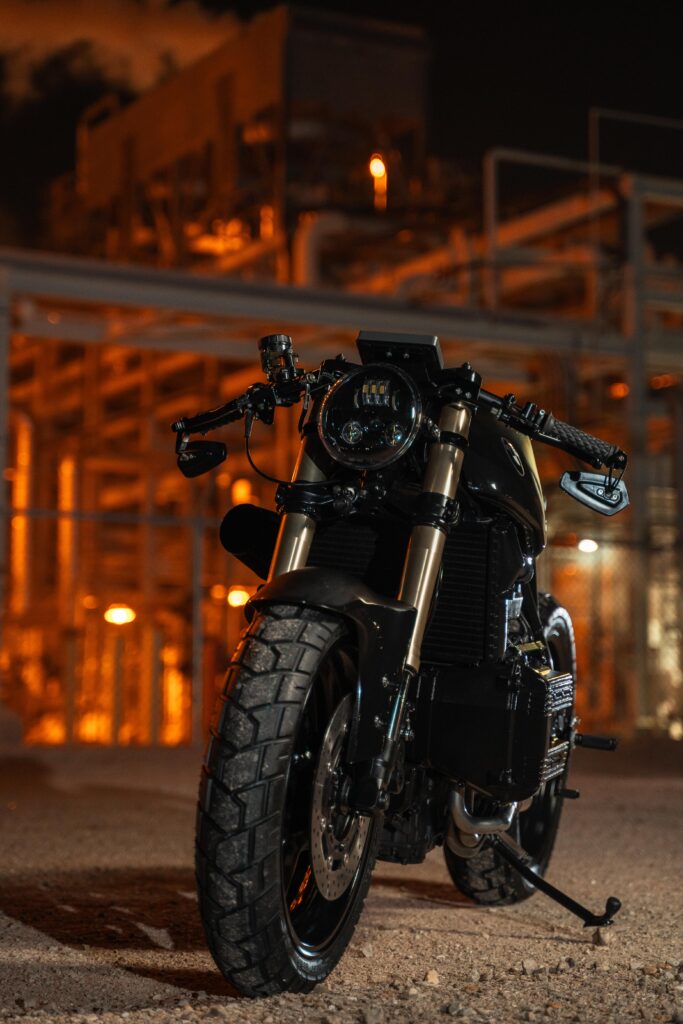
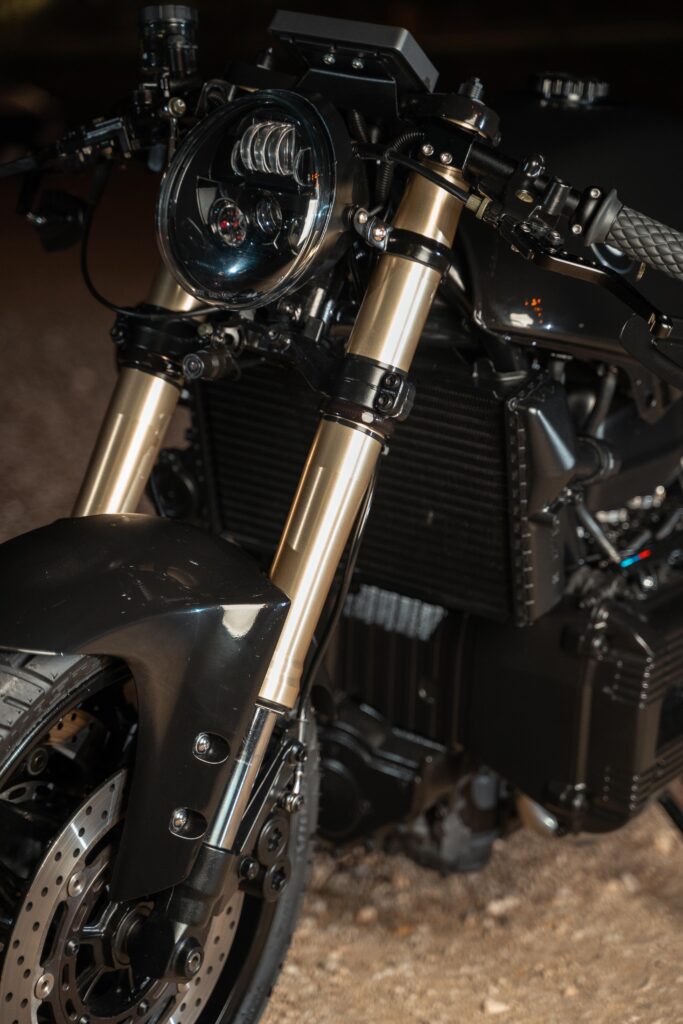
The front wheel is a 17-inch Yamaha three-spoke rim. It works with dual disc brakes for strong stopping power. The front end gives the bike a sharper look and tighter control at higher speeds.
At the rear, Arnas installed a YSS Sidewinder horizontal monoshock. It connects to the new subframe and K1100 rear wheel. The shock has a red spring and adjustable settings. This allows the rider to change how soft or firm the ride feels. The result is a balanced setup that fits the custom look and supports better road performance.
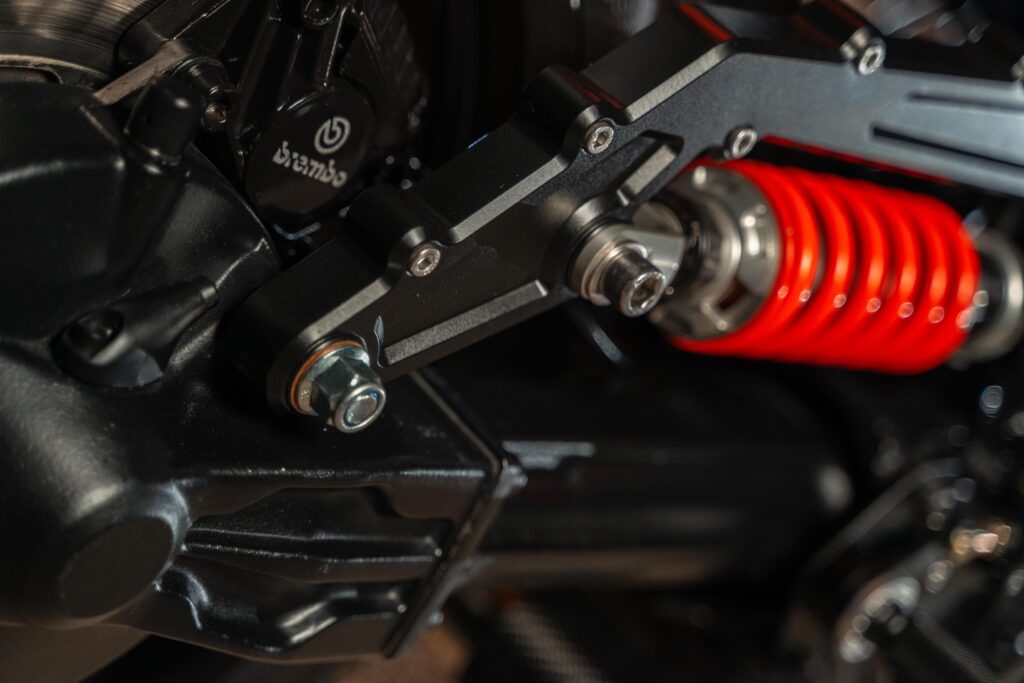
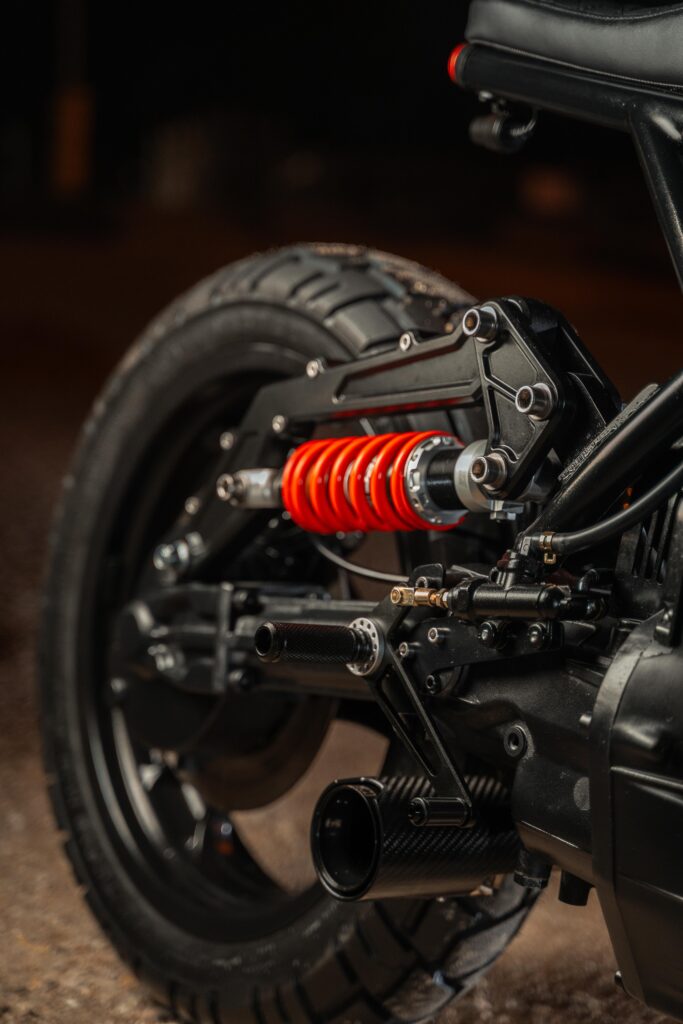
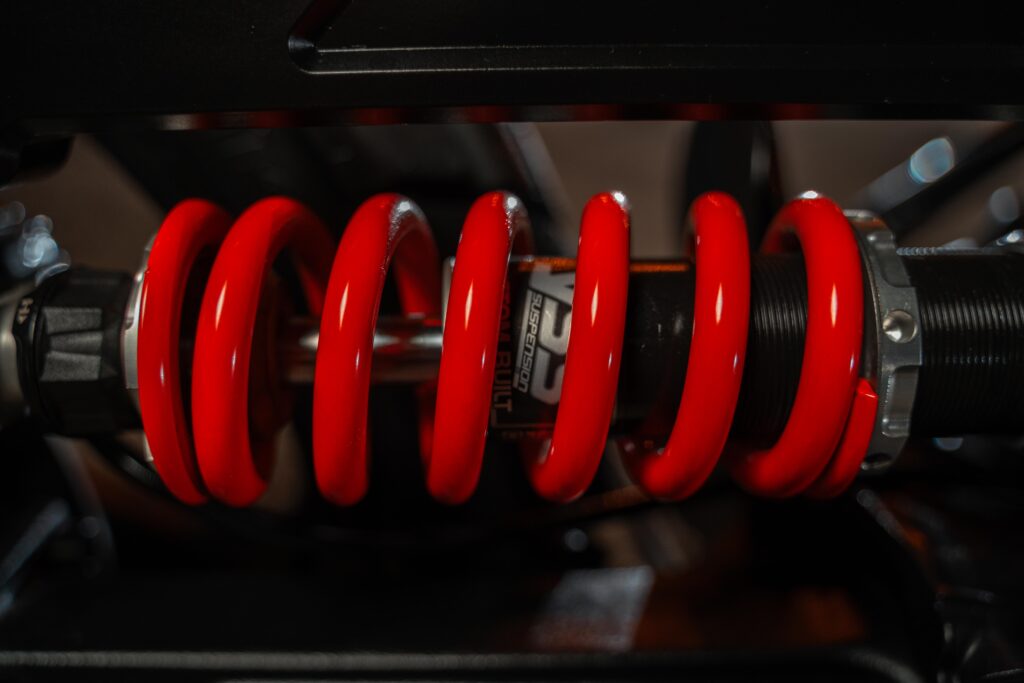
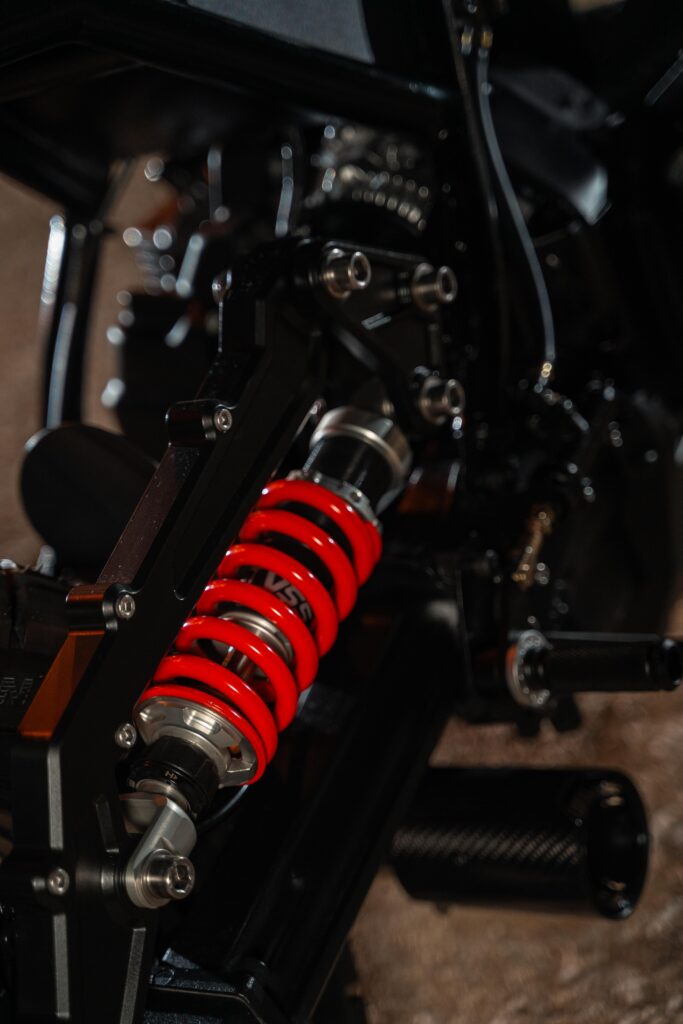
Handlebars, Controls & Cockpit Setup
The bike uses clip-on handlebars to lower the riding position. These bars are fixed below the top clamp and give a direct, sport-style feel. Arnas added aftermarket levers for both clutch and brake. They give smoother control and match the bike’s clean design.
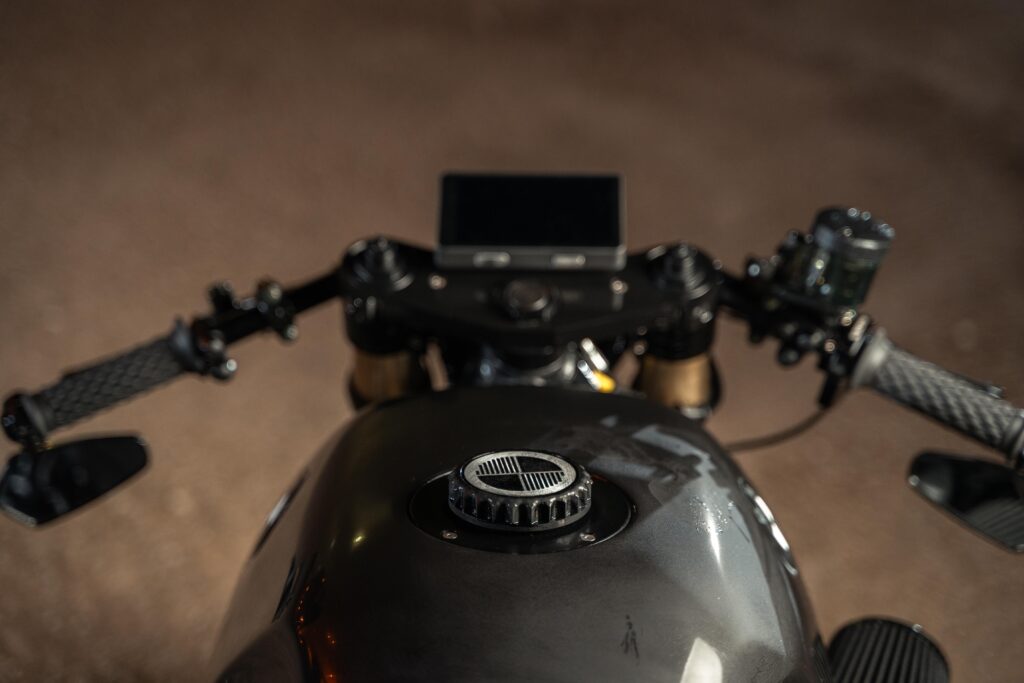
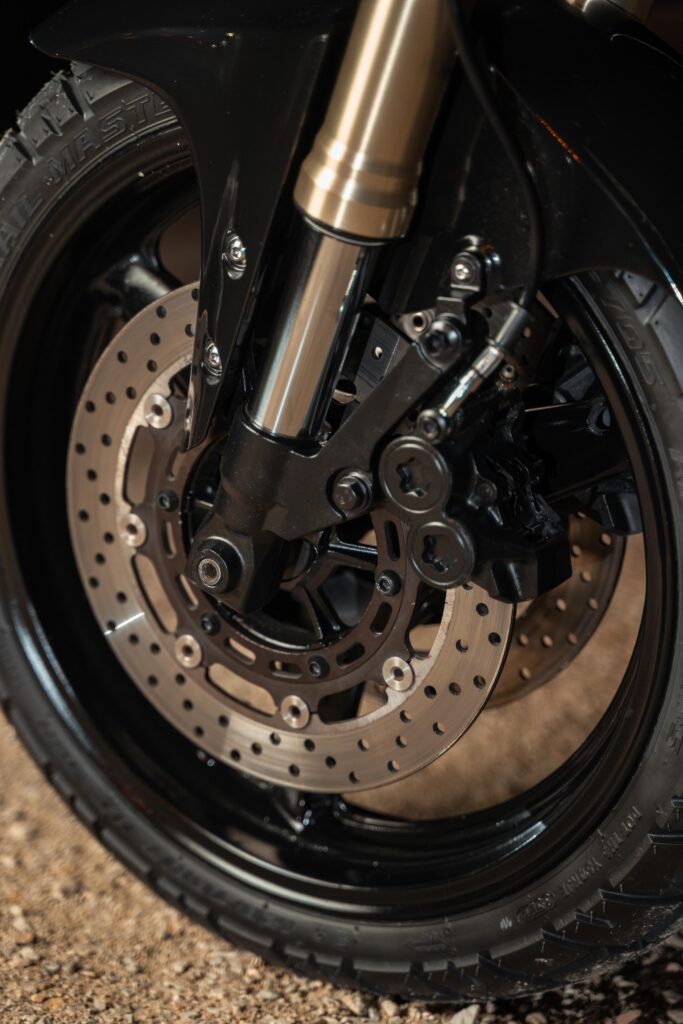
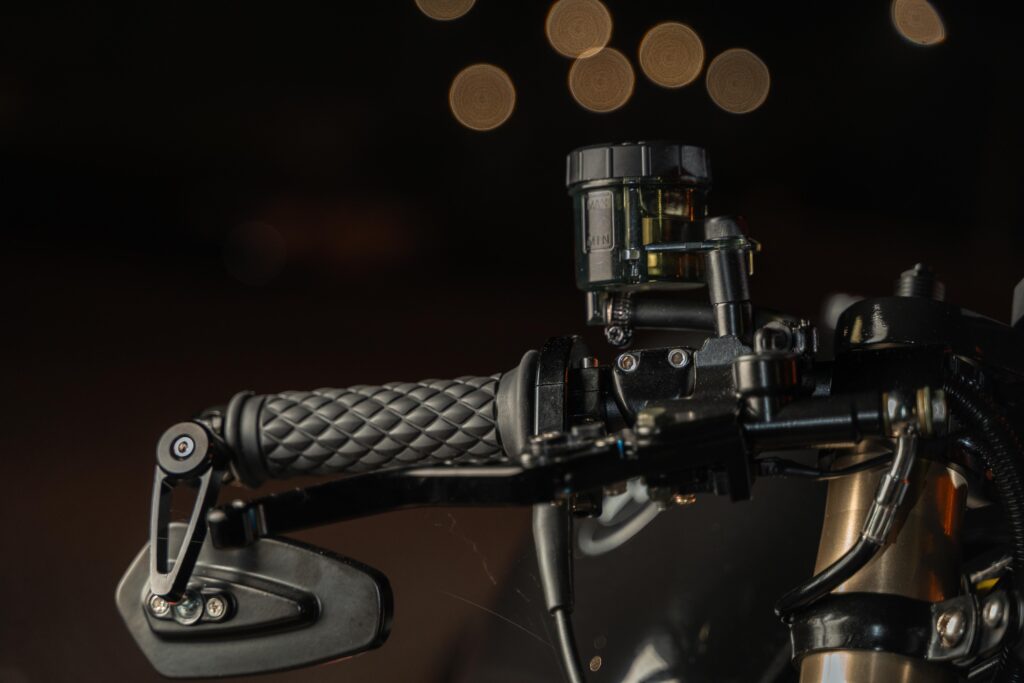
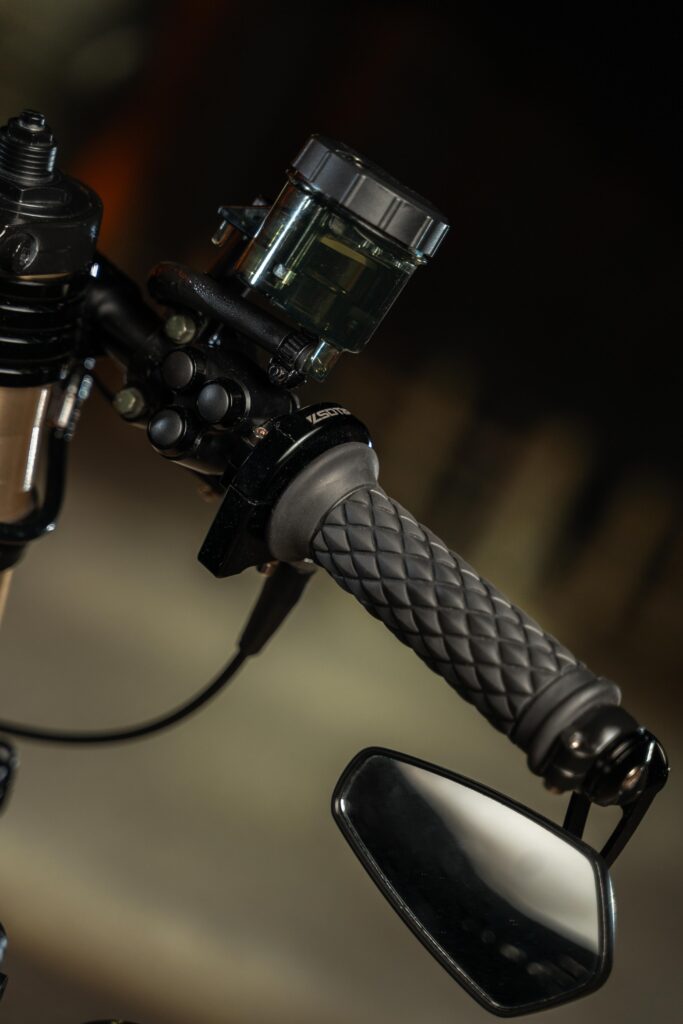
A Brembo brake reservoir sits above the right lever. It gives better brake response and fits the slim layout. The grips use a black diamond pattern that matches the seat stitching. Small bar-end mirrors extend from the ends of the bars. They stay low and clear the rider’s view without standing out.
Control switches are machined from aluminum and kept minimal. They replace larger factory buttons with simple, round inputs. The triple clamp was also modified to accept the new parts. All changes were made to improve handling while keeping the controls easy to reach and use.
Digital System: Deep Moto Touchscreen Display
The bike uses a Deep Moto 5-inch color touchscreen as the main display. It is waterproof and built for motorcycle use. The screen shows speed, tilt angle, altitude, and basic ride data. It works with both Apple and Android phones for extra features.
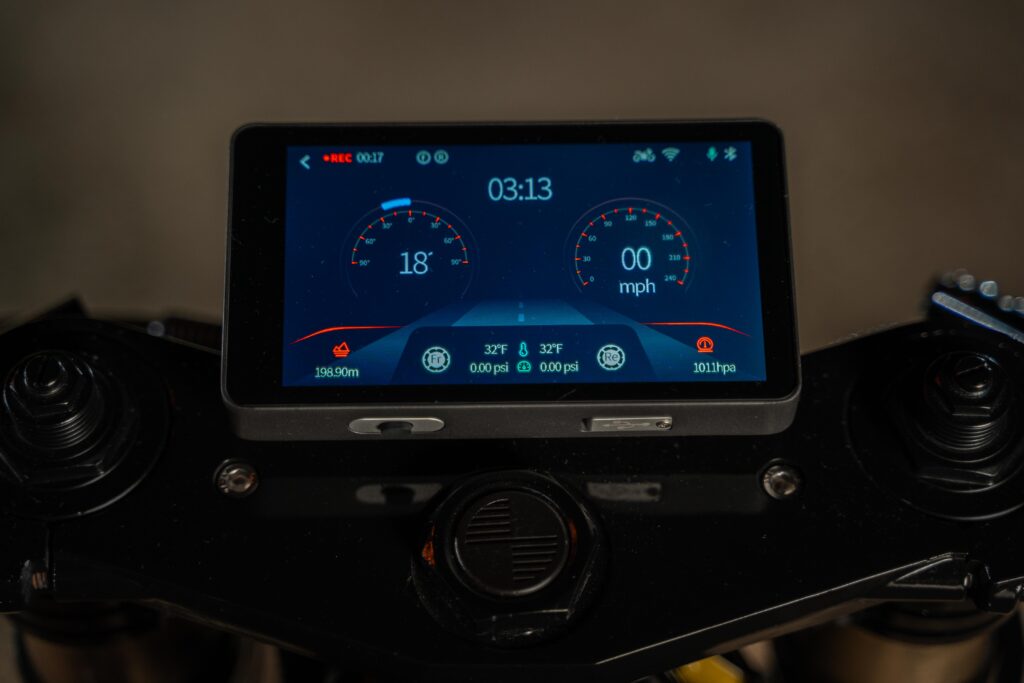
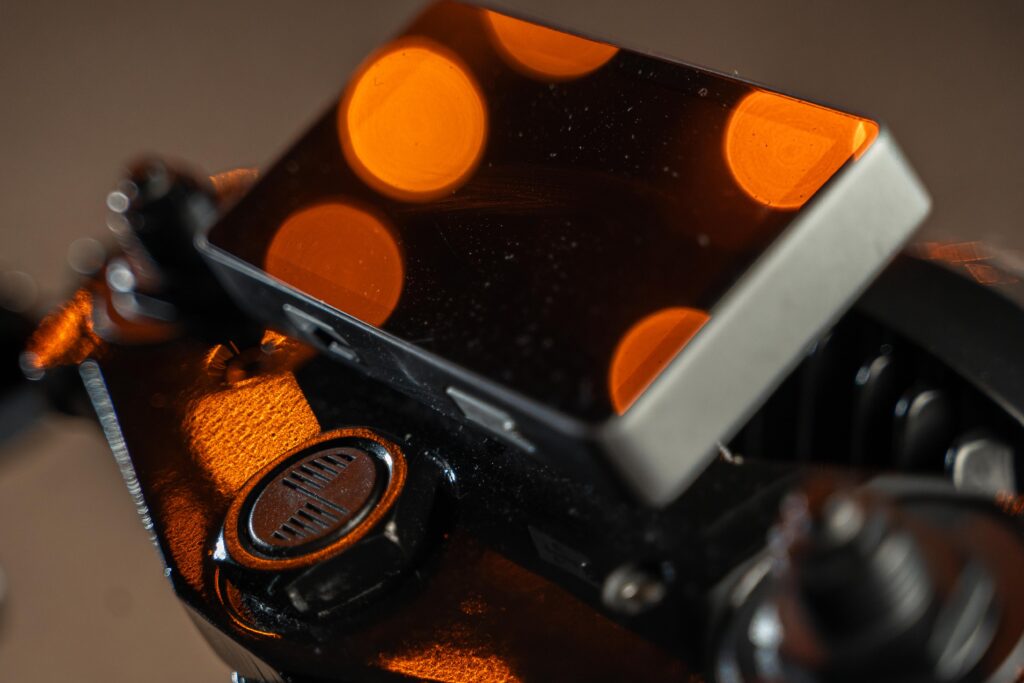
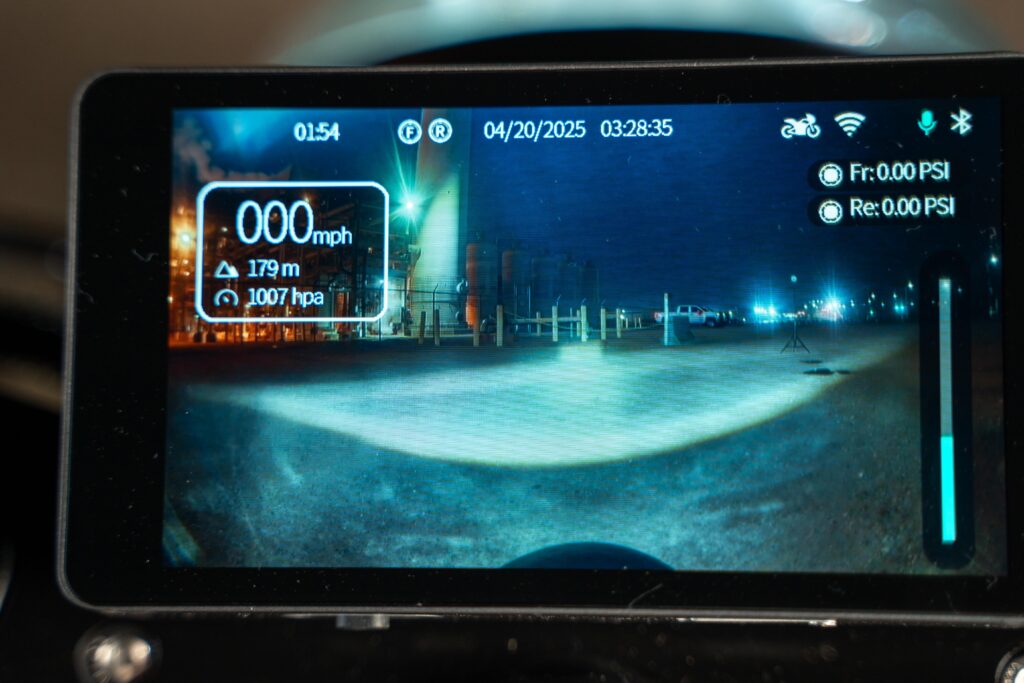
Front and rear cameras are connected to the display. They record wide-angle video while riding. A parking monitor records movement when the bike is parked. All video is stored on a 128GB internal memory system.
The screen fits cleanly into the cockpit without extra wires or mounts. It replaces a traditional speedometer with a modern, simple look. The setup adds smart functions while keeping the layout focused and clear.
Tank, Paint & Finish
The fuel tank was painted in Jet Black automotive-grade paint. It was finished with three layers of clear coat for protection and depth. The surface is smooth and glossy, giving the bike a strong visual center. This paint matches the overall blackout style of the build.
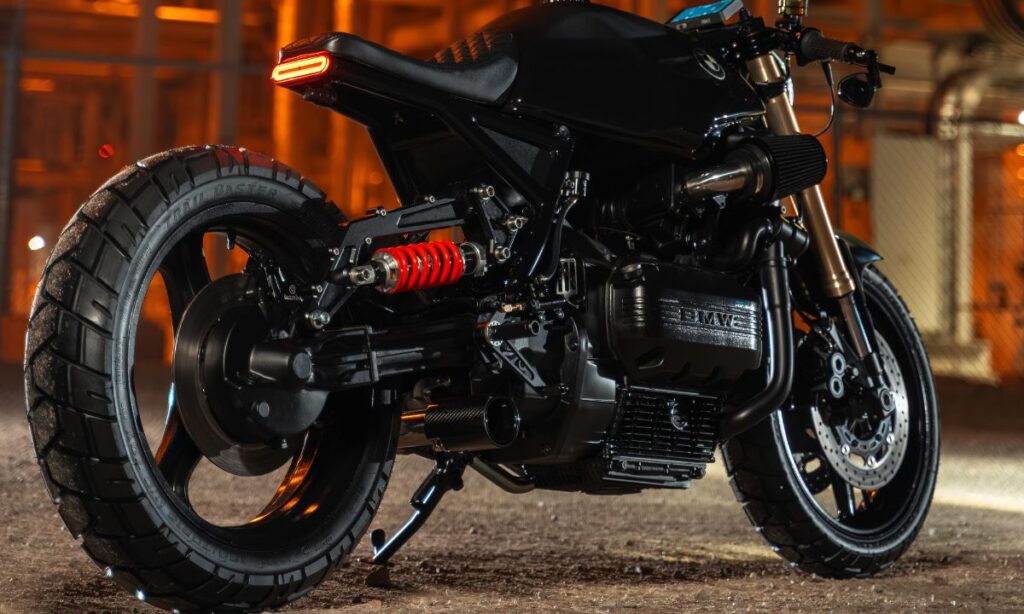
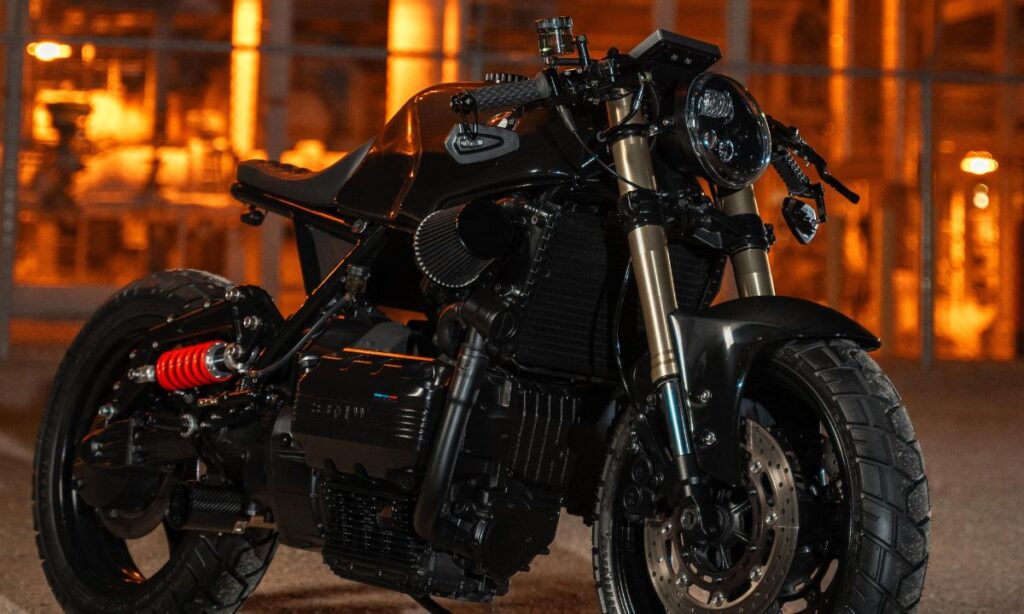
The frame was coated in matte black epoxy. This finish gives a soft texture and resists wear. It also hides seams and welds for a cleaner look. The engine was covered in wrinkle-finish black paint that handles heat well. Its covers were painted in semi-gloss black using chemical-resistant coating.
The wheels are painted in high-gloss black. This contrasts the matte frame and links the front and rear visually. Together, these finishes create a smooth and unified appearance. Each part adds to the Cyberpunk style without adding extra color or detail.
Engine & Exhaust Customization
The original 740cc triple engine was kept but fully refinished. The engine block was coated in flat black wrinkle paint. The covers were finished in semi-gloss black with chemical- and heat-resistant coating. These finishes protect the parts and match the bike’s full black theme.

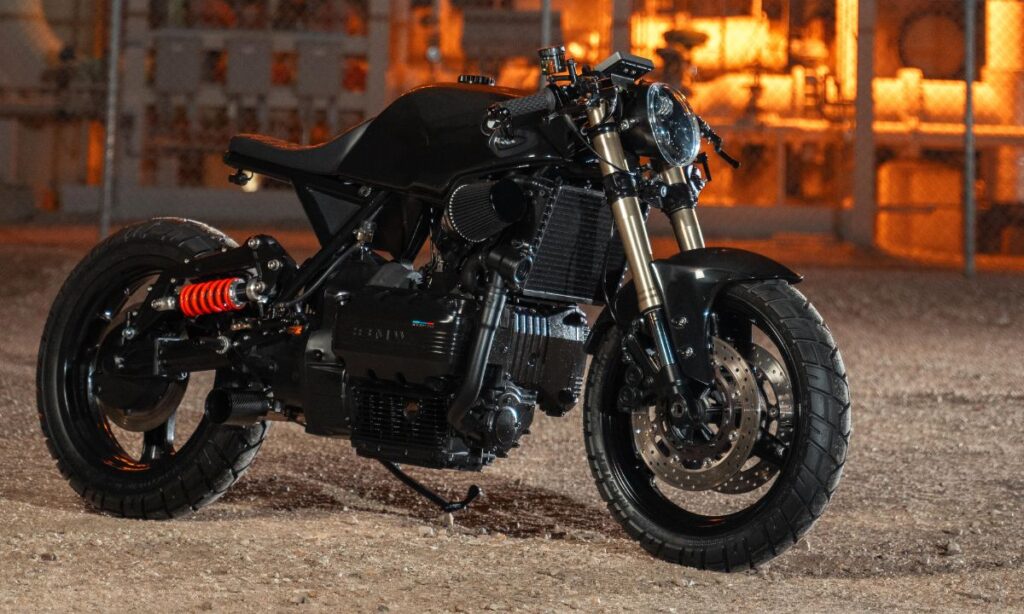
A 90-degree air intake adapter replaced the stock airbox. A high-performance pod filter was added to improve airflow. The wiring system was modified to fit the new layout. The battery was replaced and moved to a new location for better balance and space.
The exhaust system is a four-into-one layout made from stainless steel. It exits on the opposite side of the bike. A BMW M-Power carbon-fiber tip was used at the end. The muffler makes a deep tone and keeps the rear open and clean. This setup improves both looks and performance.
Electrical, Wiring & Keyless System
The electrical system was updated to support new features and clean wiring. All major wires were routed to stay hidden within the frame. This kept the overall design minimal and easy to manage. The battery was replaced and relocated for better balance and space use.
A keyless ignition system was installed. It allows the rider to start the bike without using a traditional key. A backup switch remains in place and works with a standard key. Two sets of keys were included with the build.
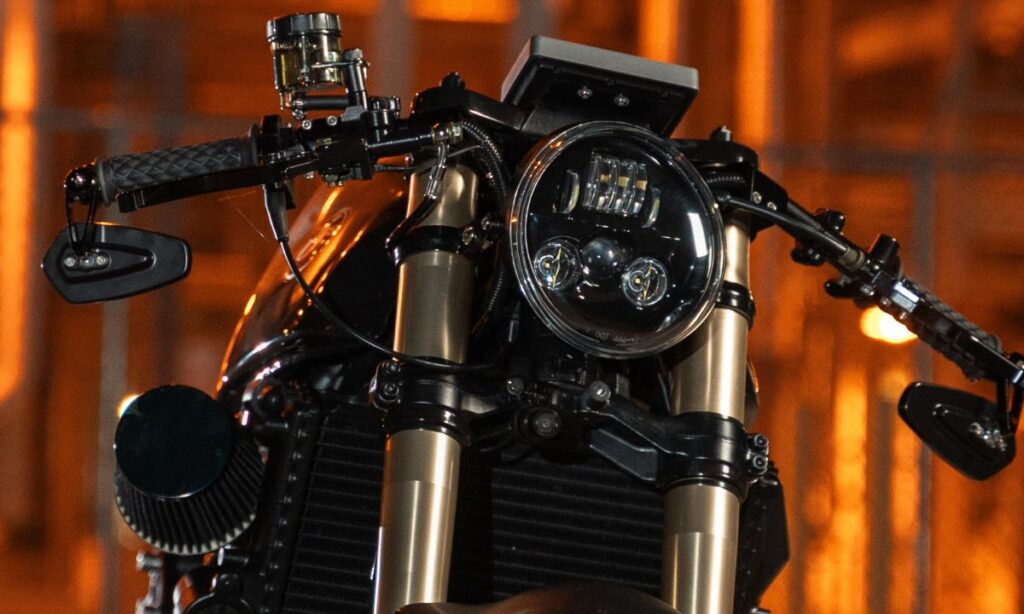
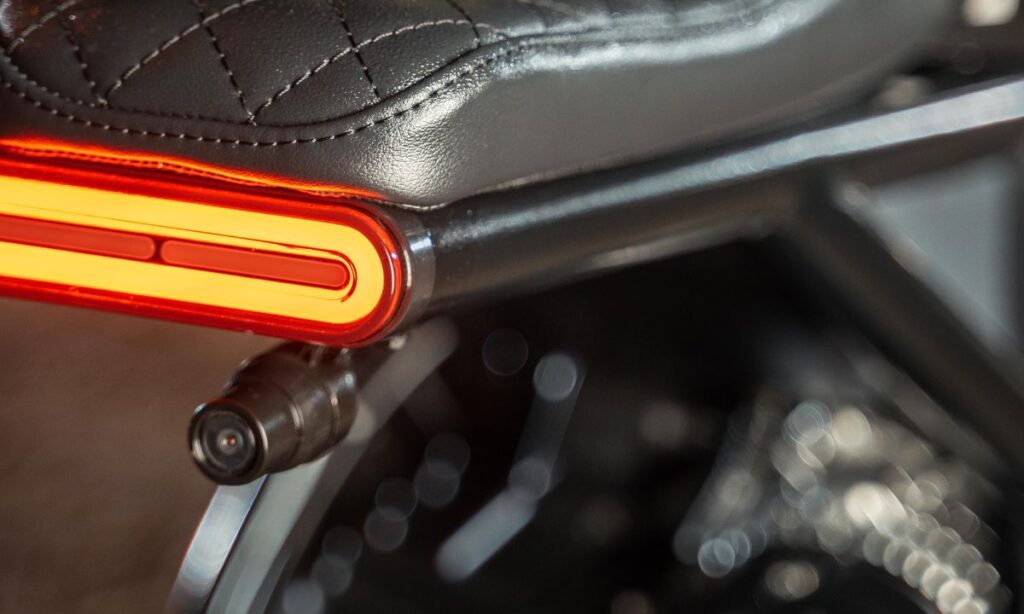
Front and rear cameras were connected to the main display. The front camera sits below the headlight. The rear camera is fixed under the seat. Both are placed to record a wide field of view without standing out. This setup keeps the design clean and adds smart functions.
Brakes, Tires & Wheels
The front and rear wheels follow a balanced setup. At the front, Arnas used a 17-inch Yamaha R1 three-spoke wheel. It works with dual disc brakes for strong stopping power. The rear features an 18-inch BMW K1100 wheel, the widest available for this model. Both wheels were painted in gloss black to match the build.
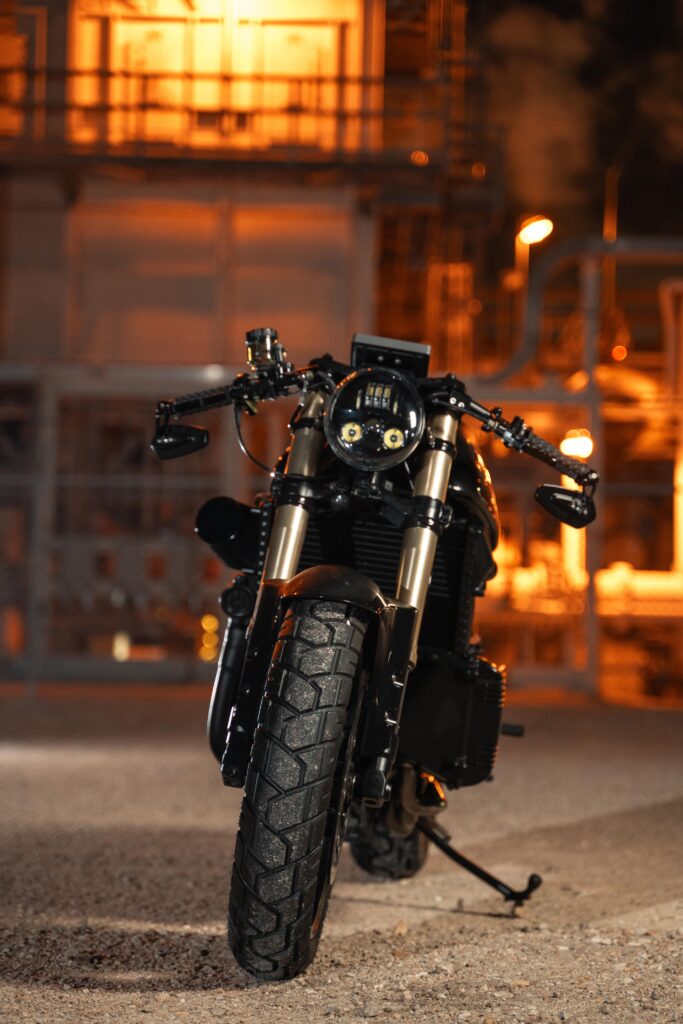
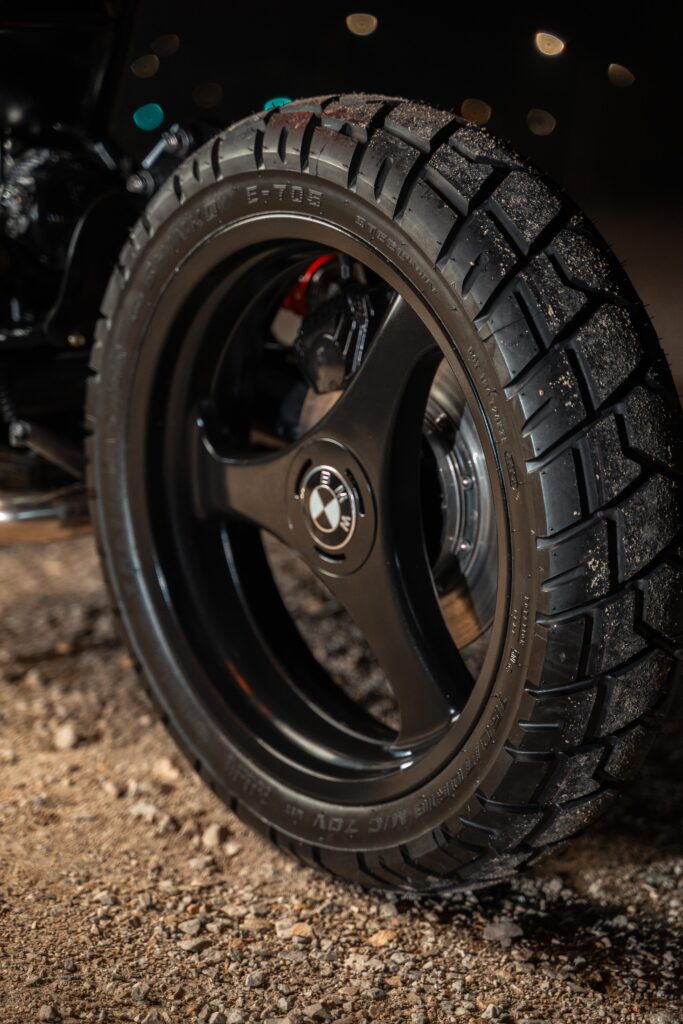
The tires are sized for both grip and style. The front uses a 120/70/17 tire. The rear holds a 160/70/18 tire. This pairing gives a planted look and supports sharp cornering.
New brake hoses and a rear master cylinder were installed. These parts improve braking feel and safety. The brake system fits with the modern suspension and keeps the bike under control in different riding conditions.
Lighting & Safety Features
The headlight is a DOT-approved LED unit. It gives clear light and fits the front without extra parts. The turn signals are mounted on the forks. They are tinted and nearly invisible when off. Once active, they are bright and easy to see.
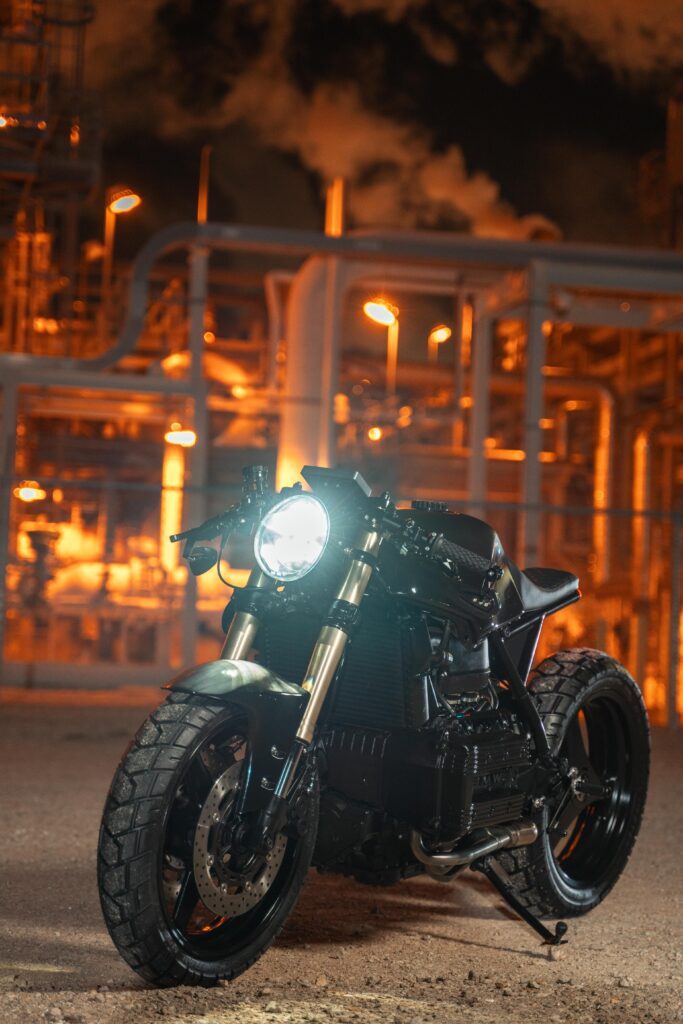

At the rear, Arnas installed an integrated LED tail light. It includes turn signals and a brake light with a blinking function. This helps alert drivers while keeping the rear simple. A small café-style rear fender sits above the wheel. It protects the rider and follows the shape of the frame.
All lights are wired cleanly and placed with care. They support safety but never take away from the dark, minimal look of the bike.
Riding Feel & Final Setup
The bike has been ridden about 50 miles since the build was completed. Before that, the odometer showed around 19,000 miles. Most of the riding parts are now new or fully upgraded. The frame, engine, brakes, and suspension were all rebuilt or replaced.

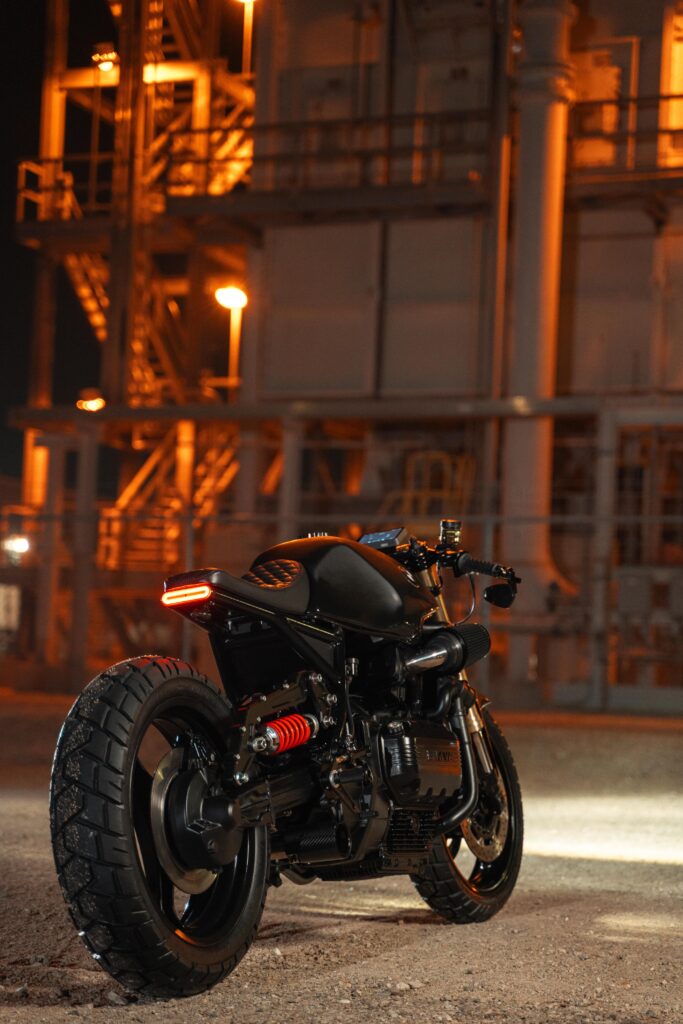
The riding position is low and forward. Clip-on handlebars and rear-set foot pegs create a sport-style stance. The custom monoshock keeps the rear firm and balanced. Together, these parts give the rider more control at speed and through corners.
The engine responds fast with smooth power. The intake and exhaust setup adds a deep sound. Every part works together to give a direct and strong riding feel. This bike is built to perform on the road, not just to look good.
Final Thoughts
This 1992 BMW K75 cafe racer build shows how a classic platform can be reshaped with modern parts and clean design. Arnas kept the core structure but changed almost everything else. Each new part was picked to improve the bike’s feel, look, and function.
The result is a café racer with a low stance, modern tech, and a full blackout finish. From the R1 front end to the touchscreen display, every update supports both style and use. The cameras, keyless ignition, and custom suspension add comfort and control without making the bike look too complex.
Cyberpunk builds on the success of Arnas’s earlier work. It stays close to the original form but moves forward in every detail.
Full Build Photo Gallery
Here is a full set of high-resolution images showing every detail of Cyberpunk. Scroll or click to explore the full project from every angle.
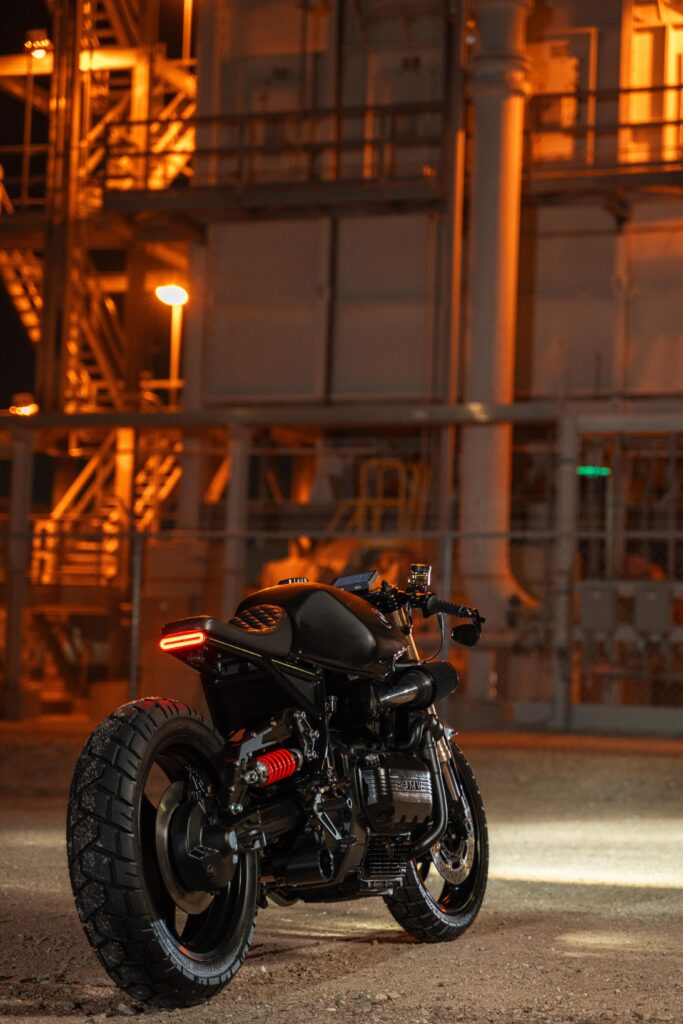
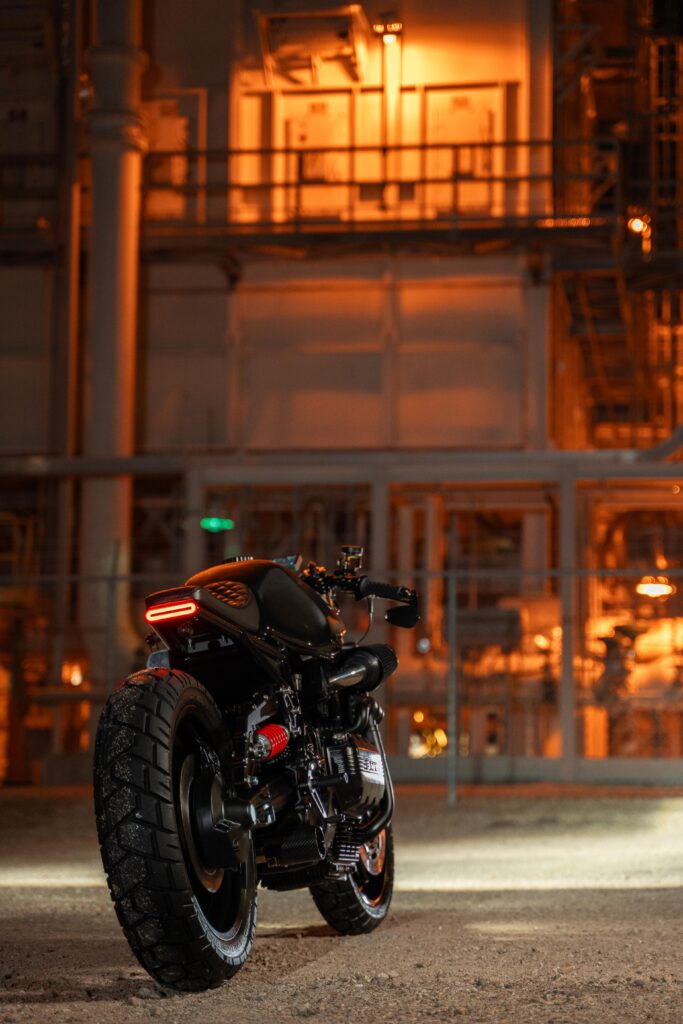
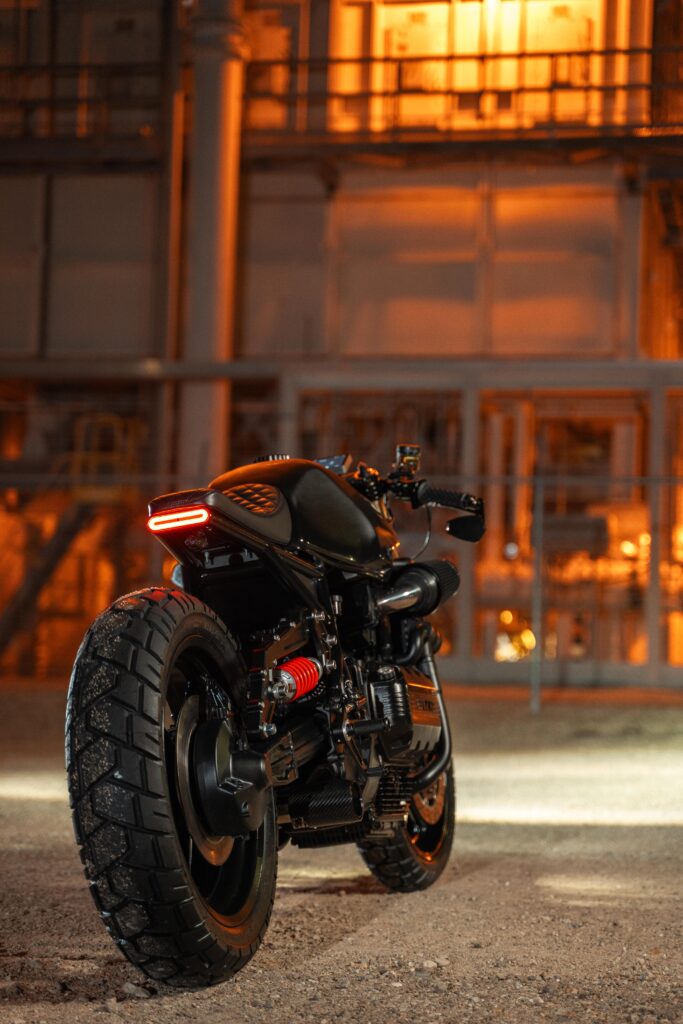
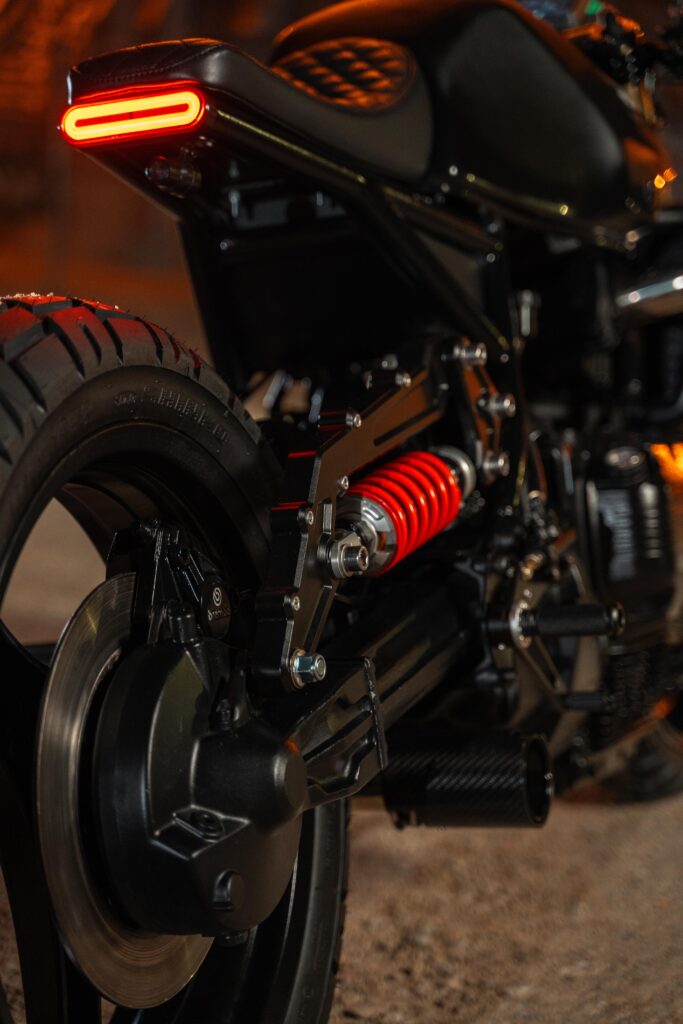
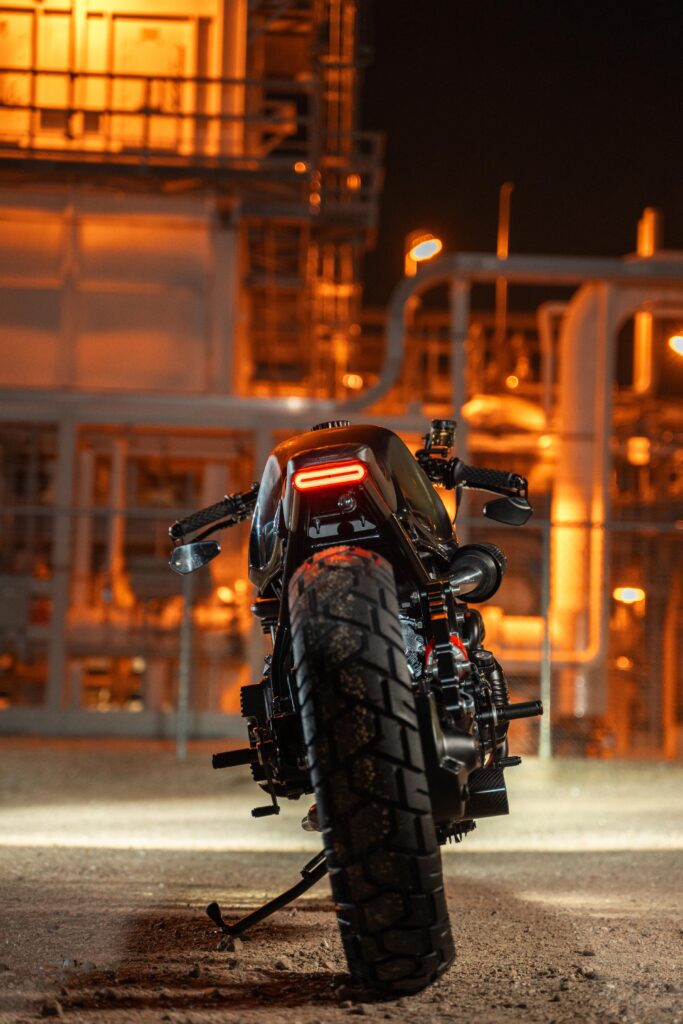
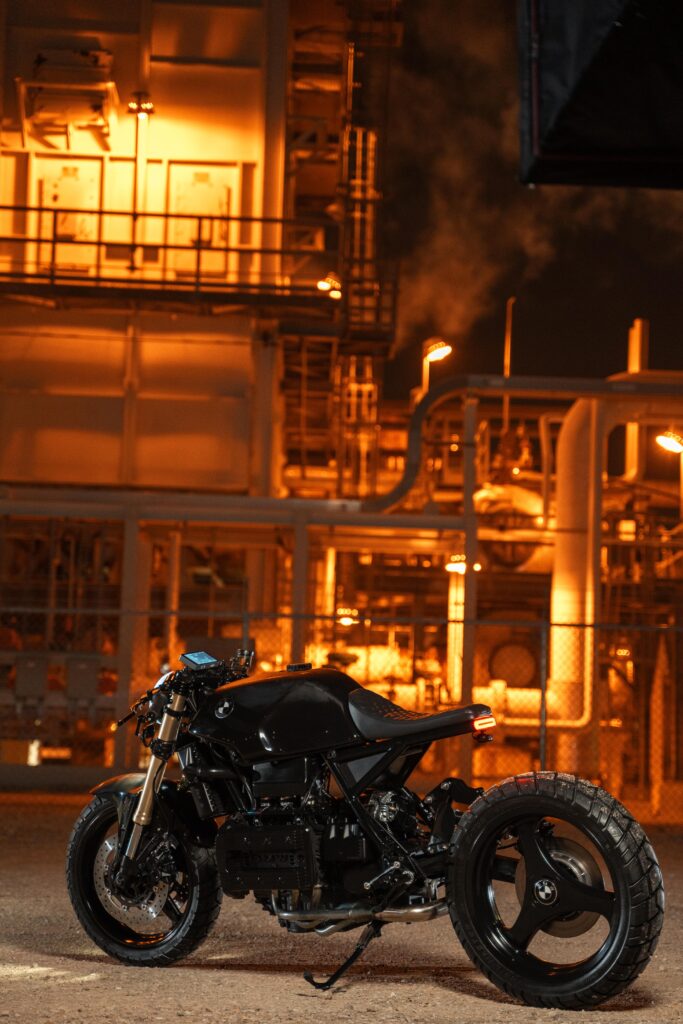
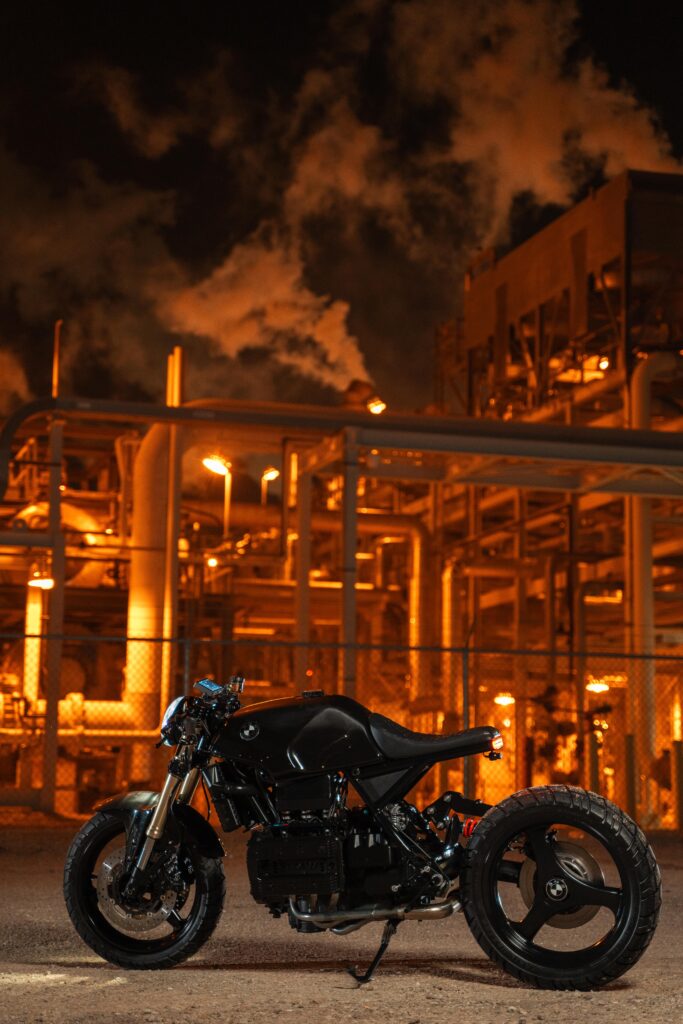
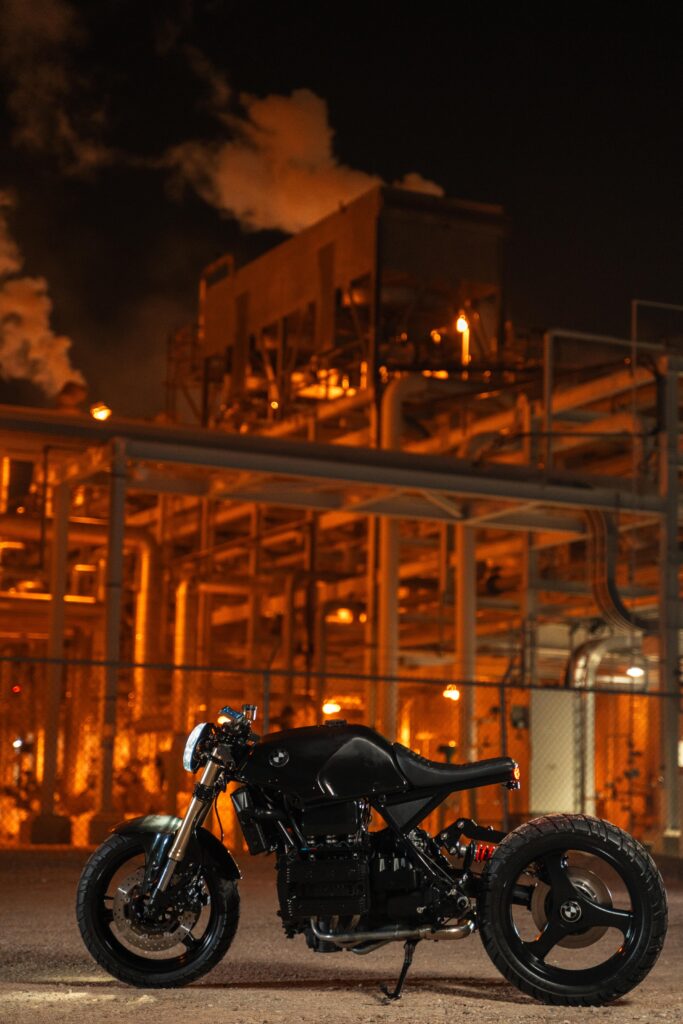
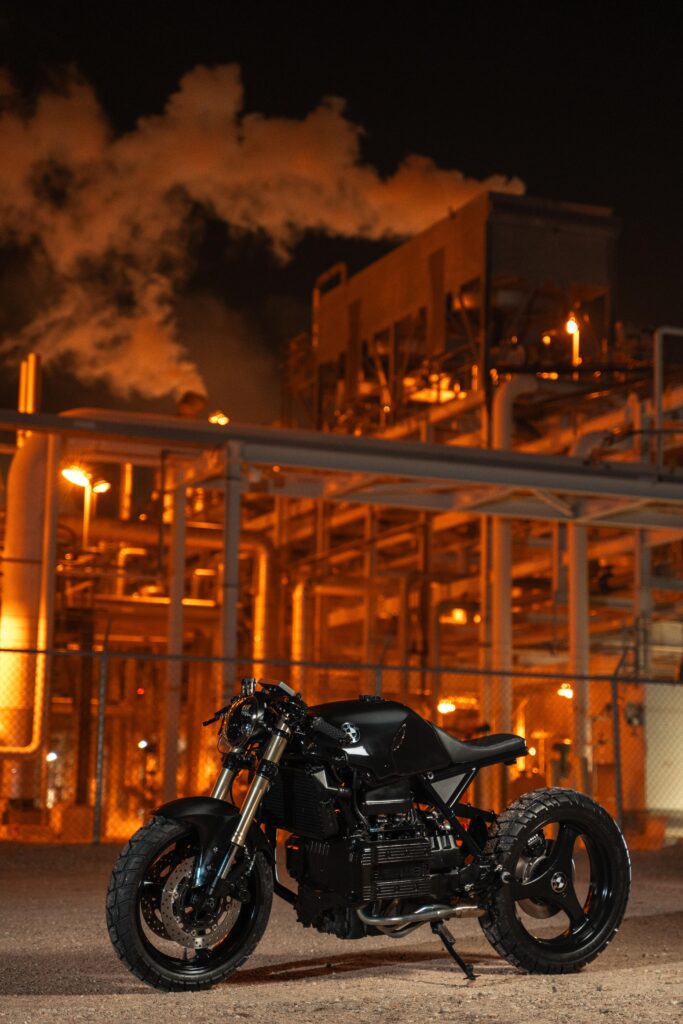
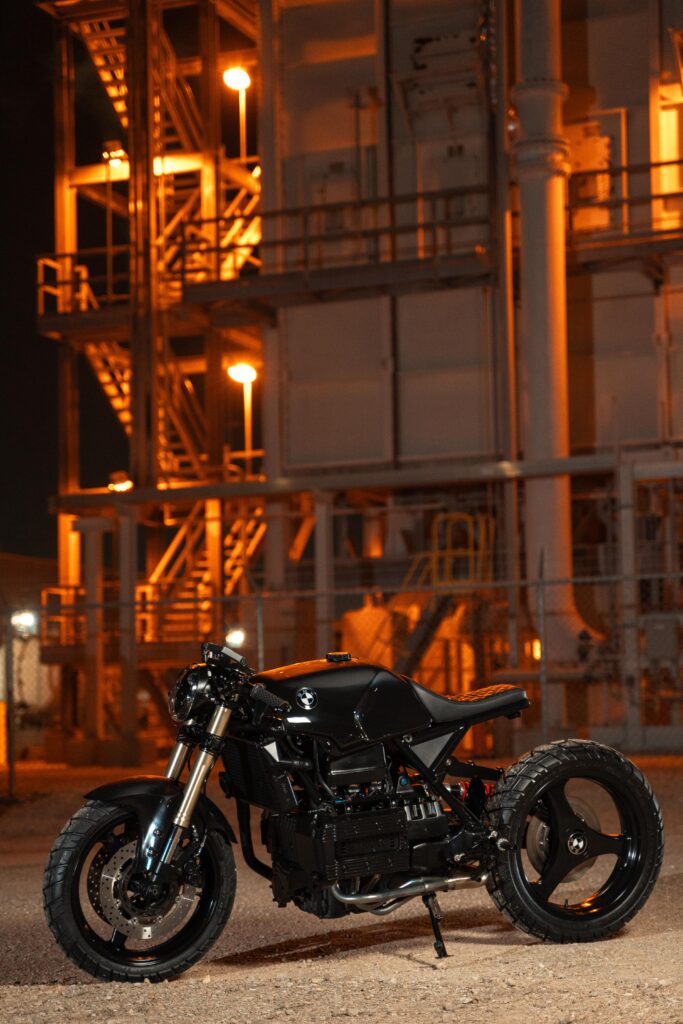
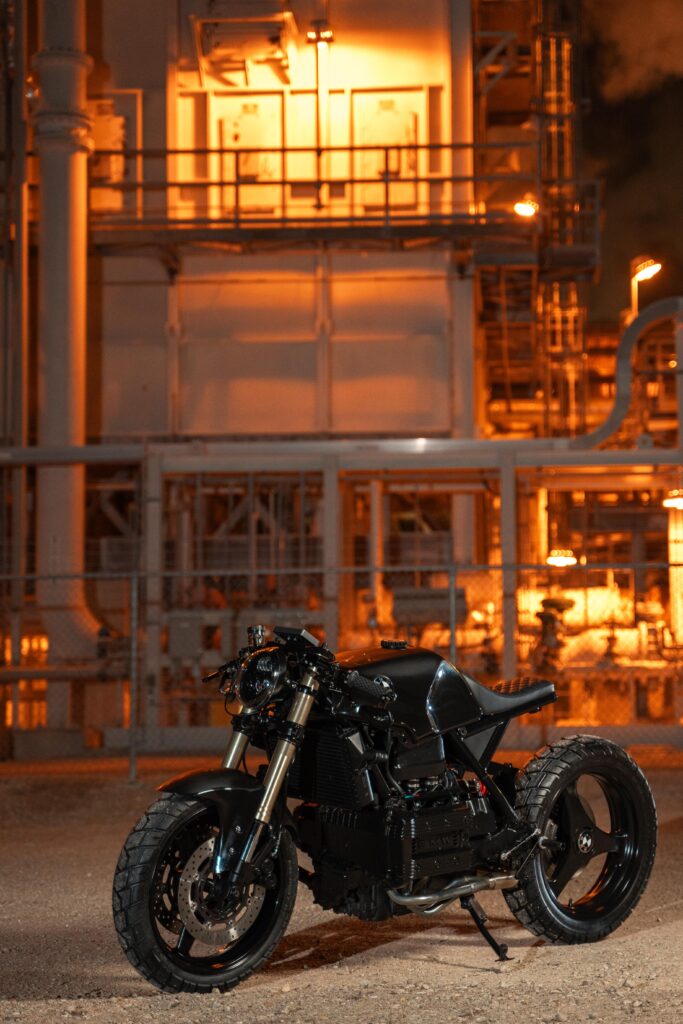
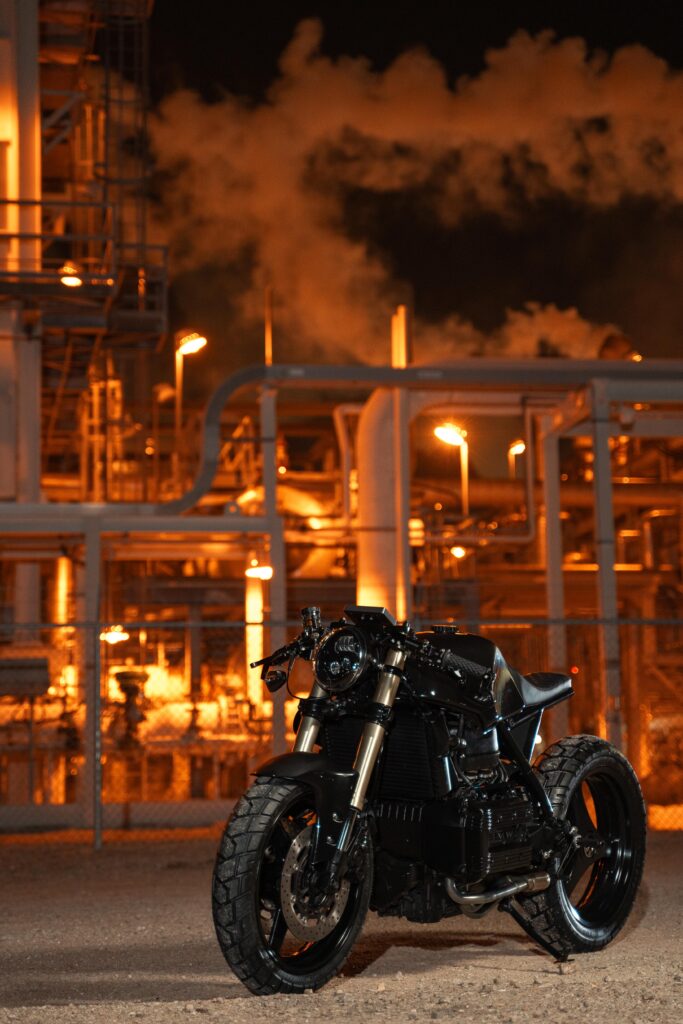
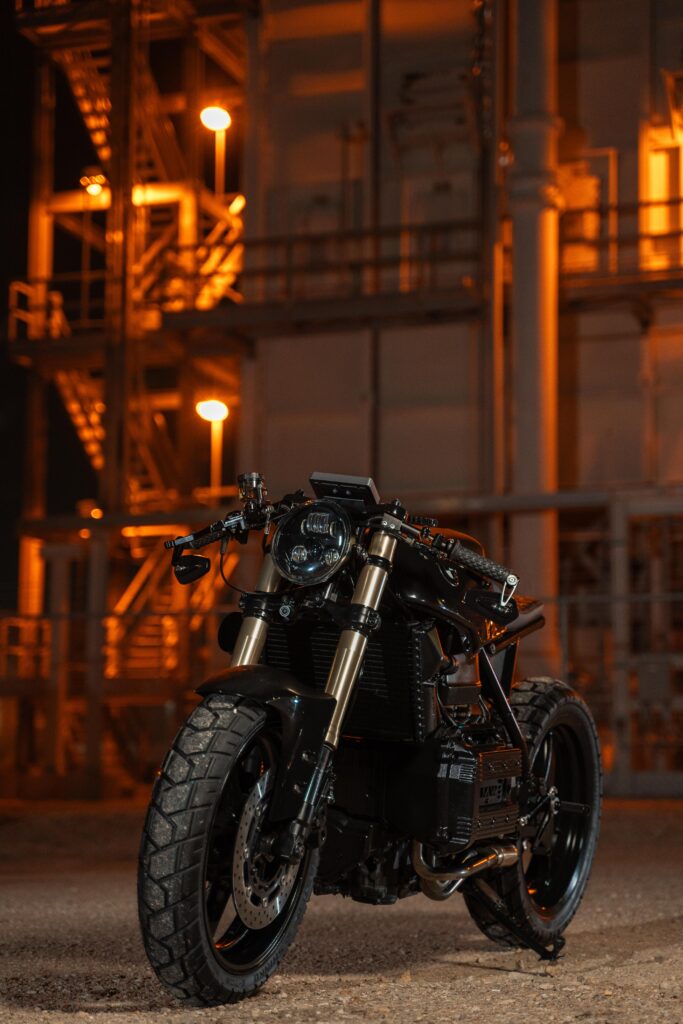
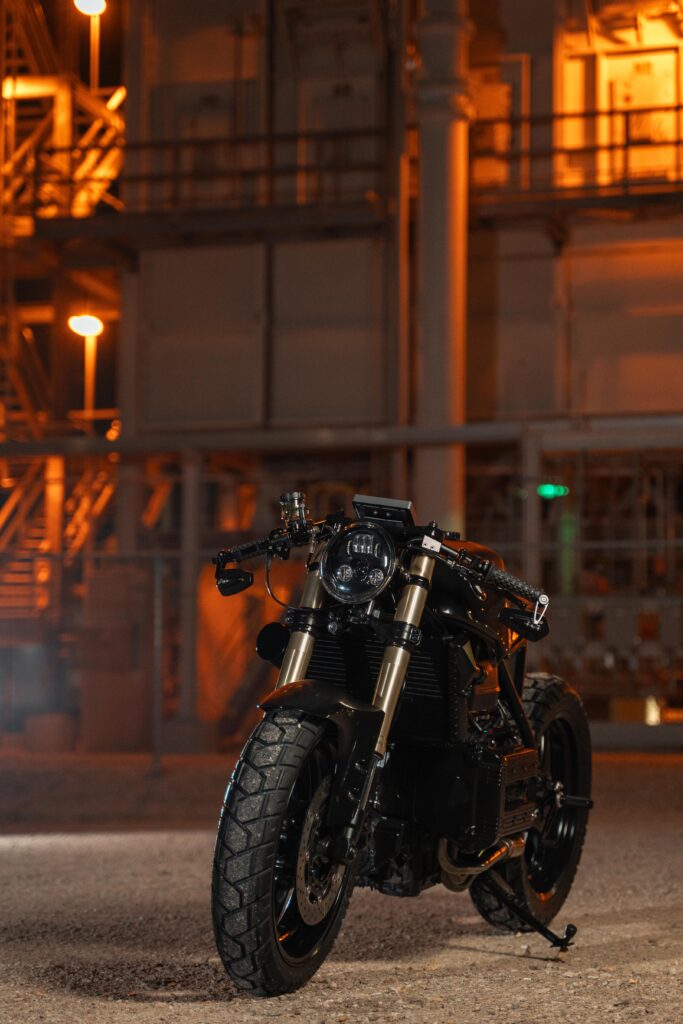
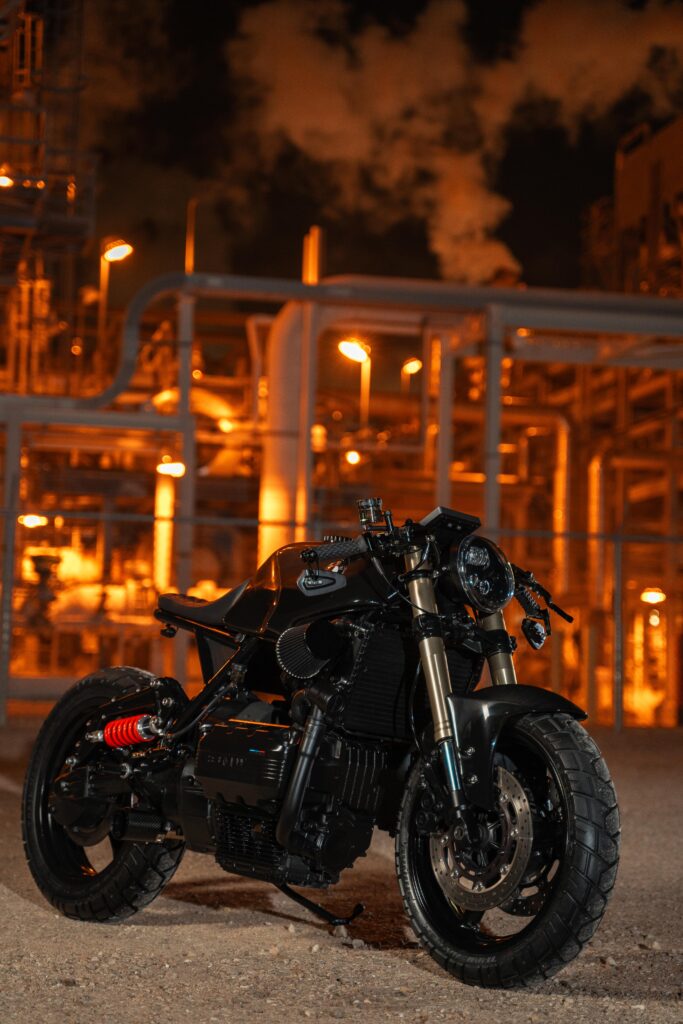
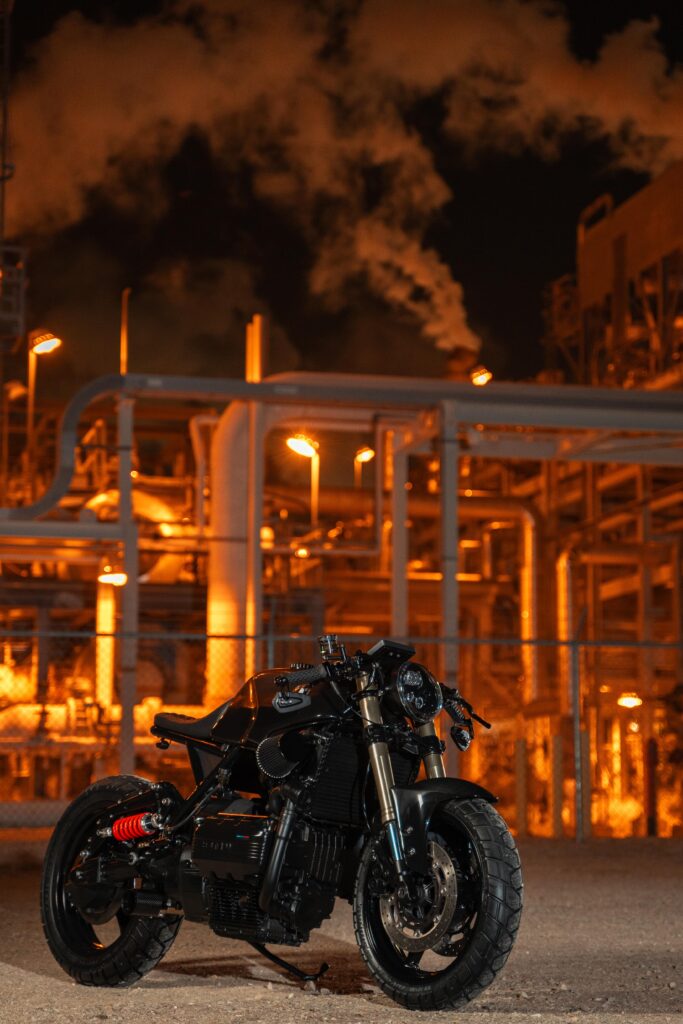
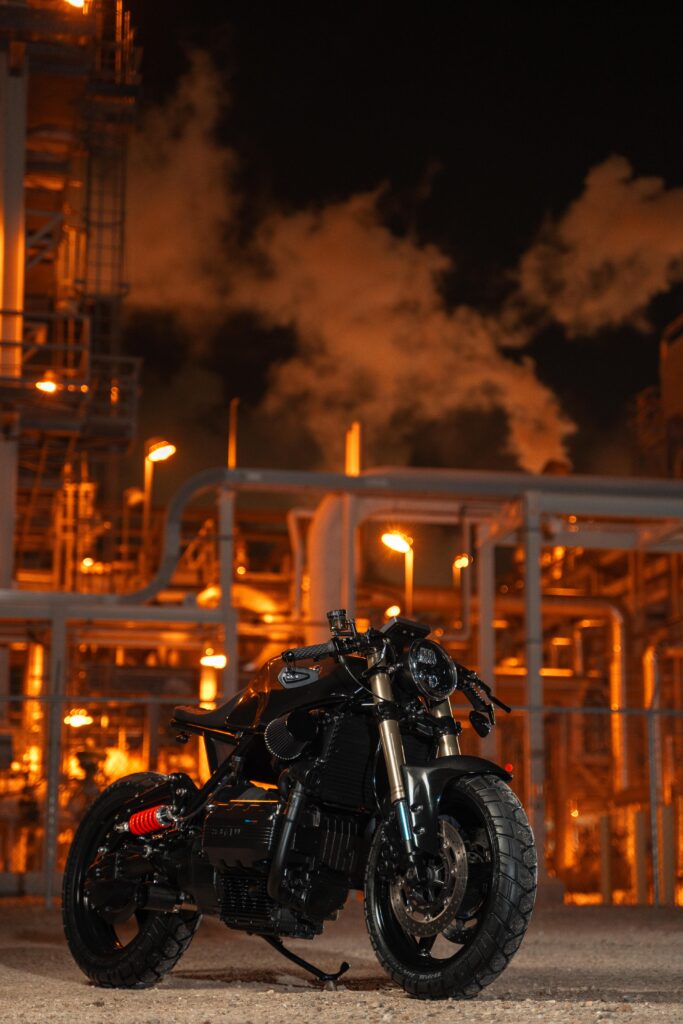
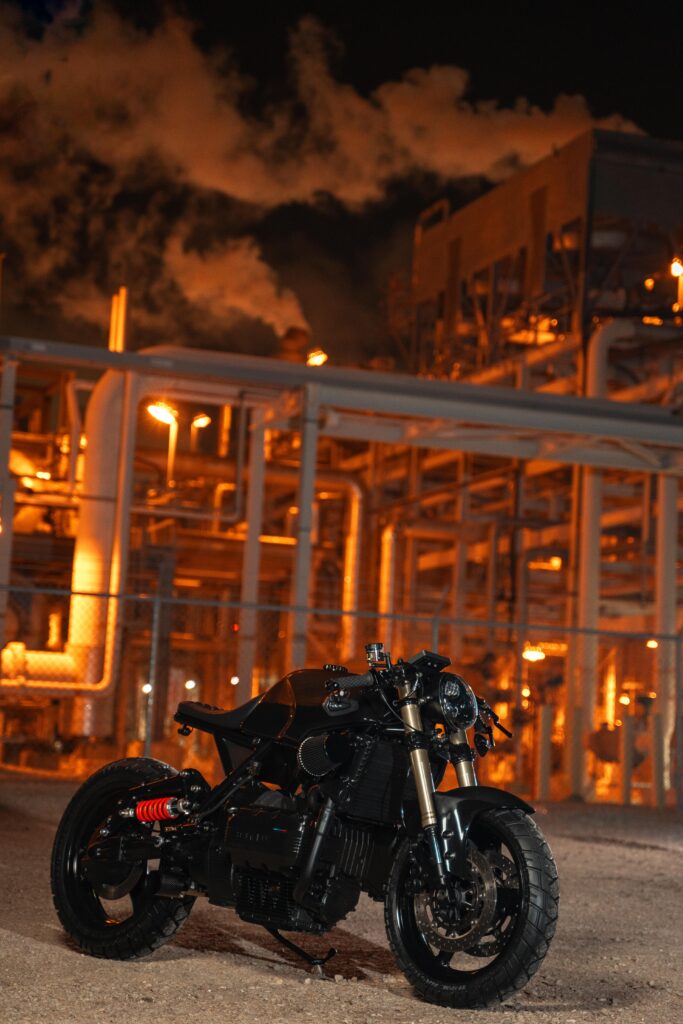
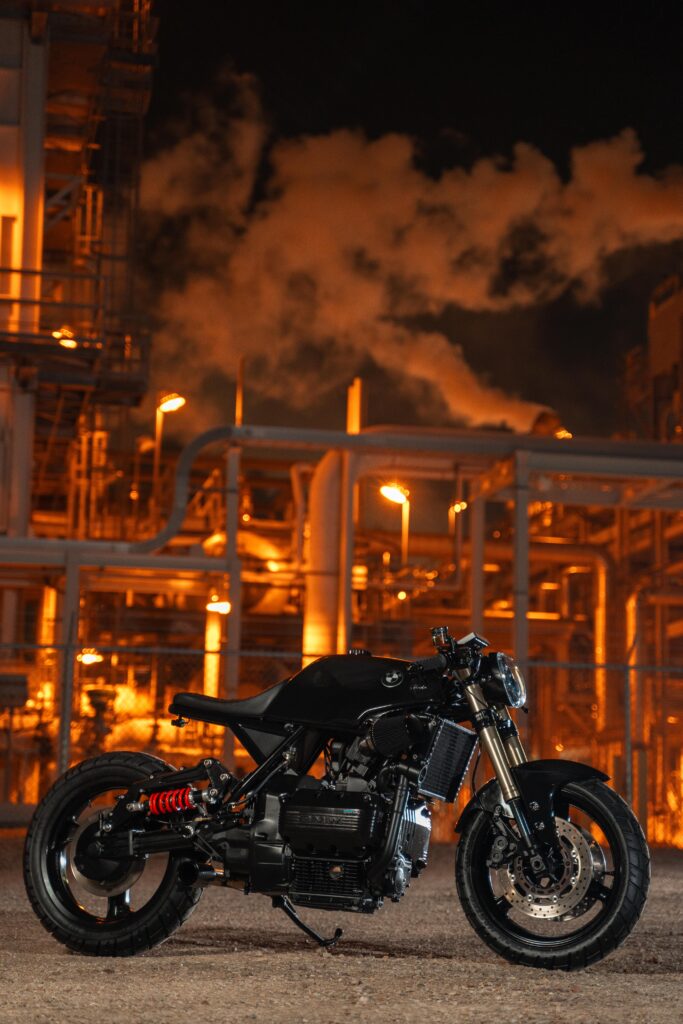

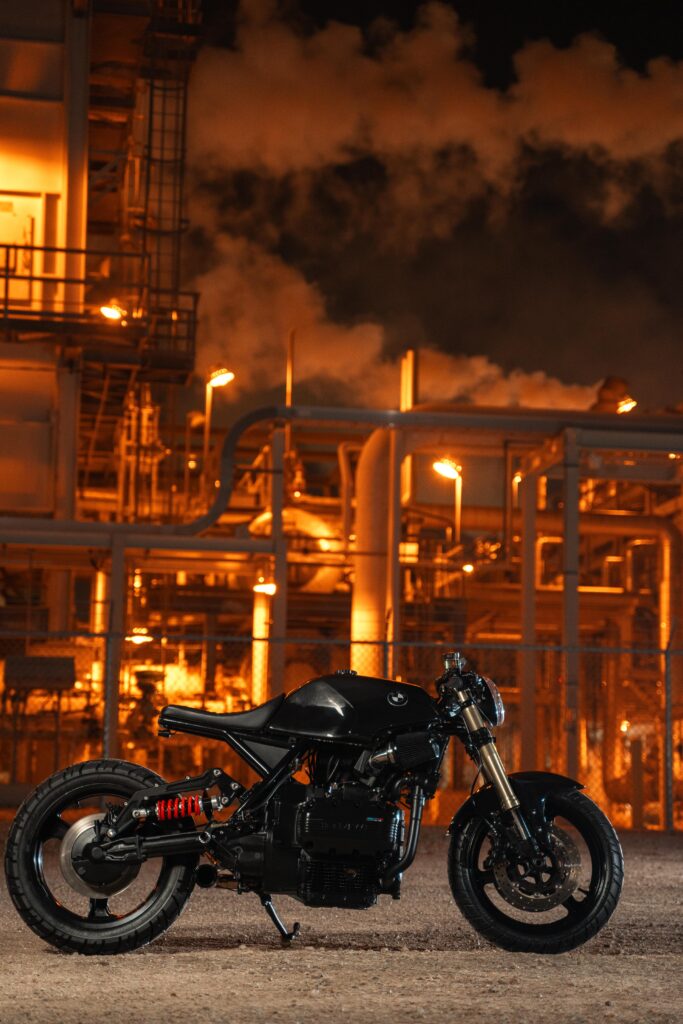
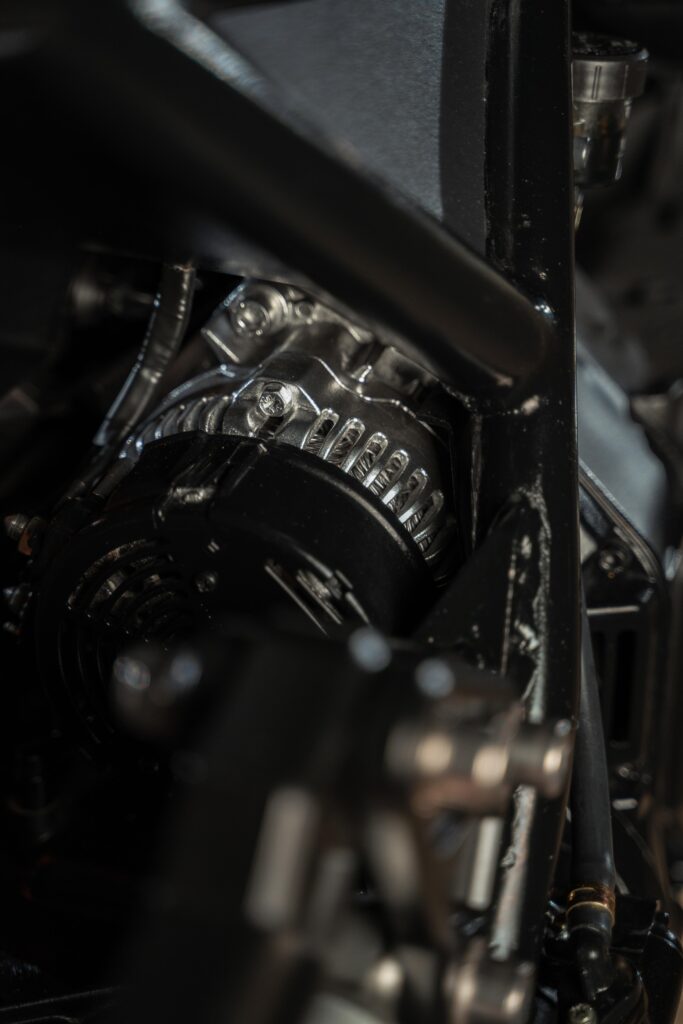
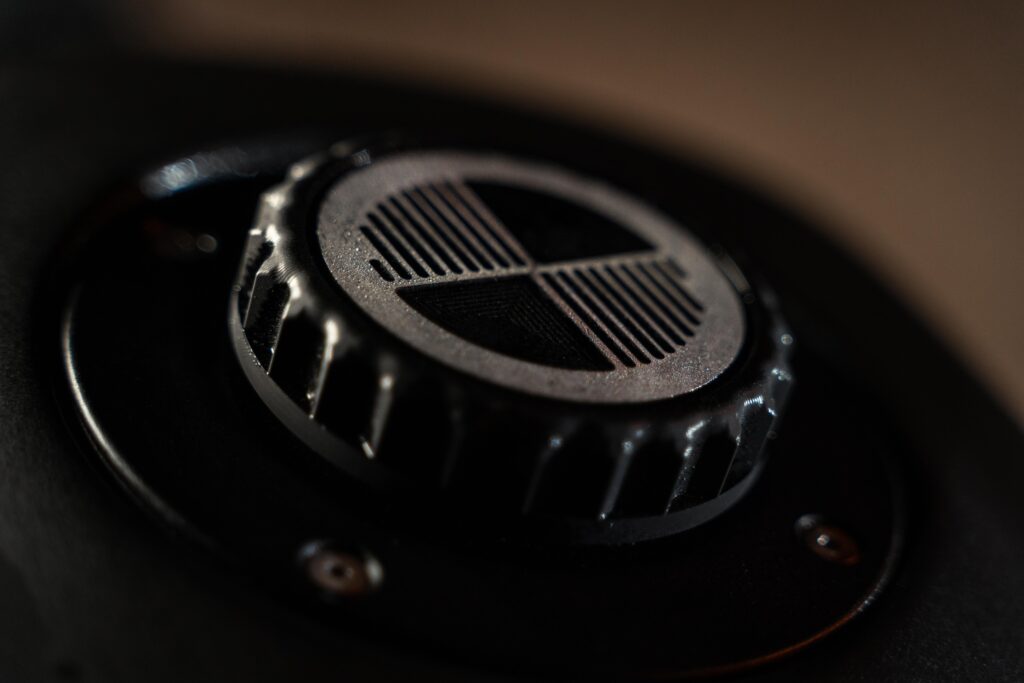
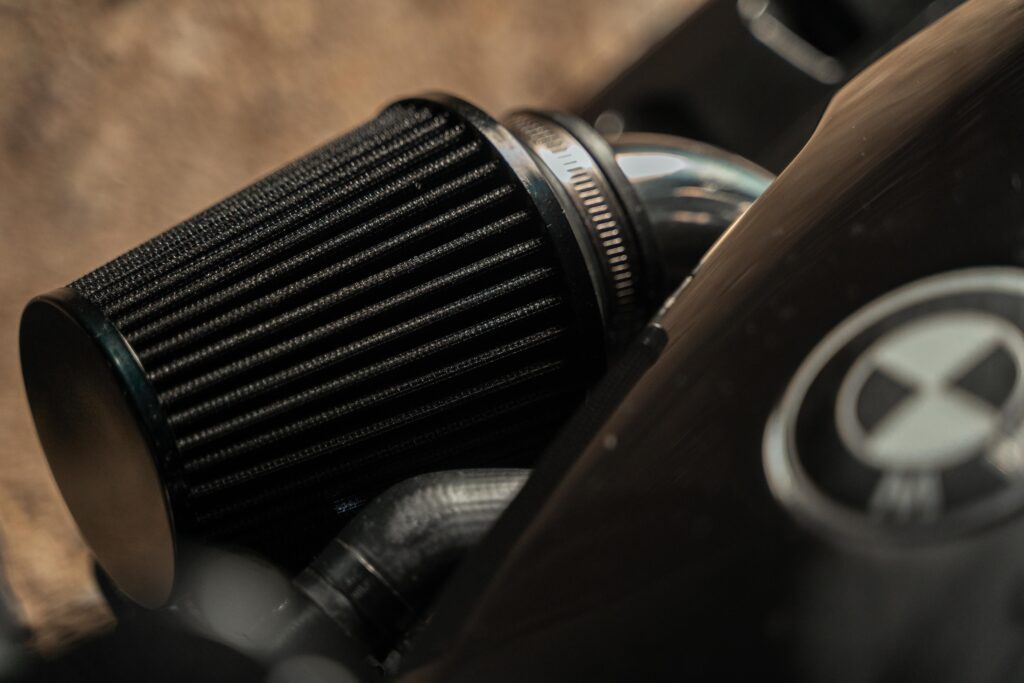
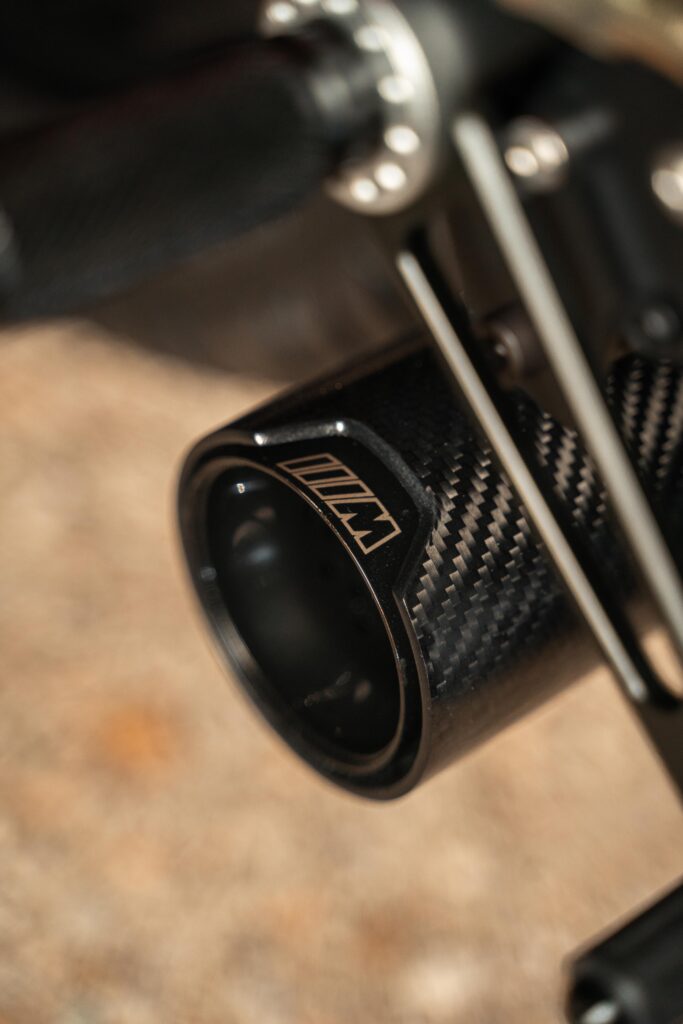
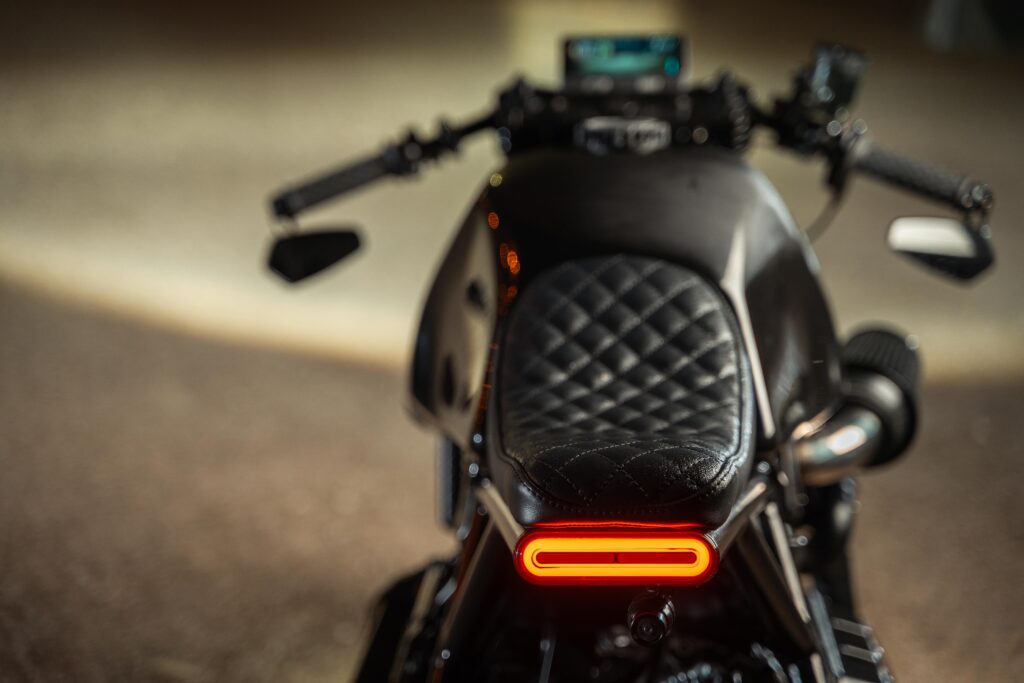
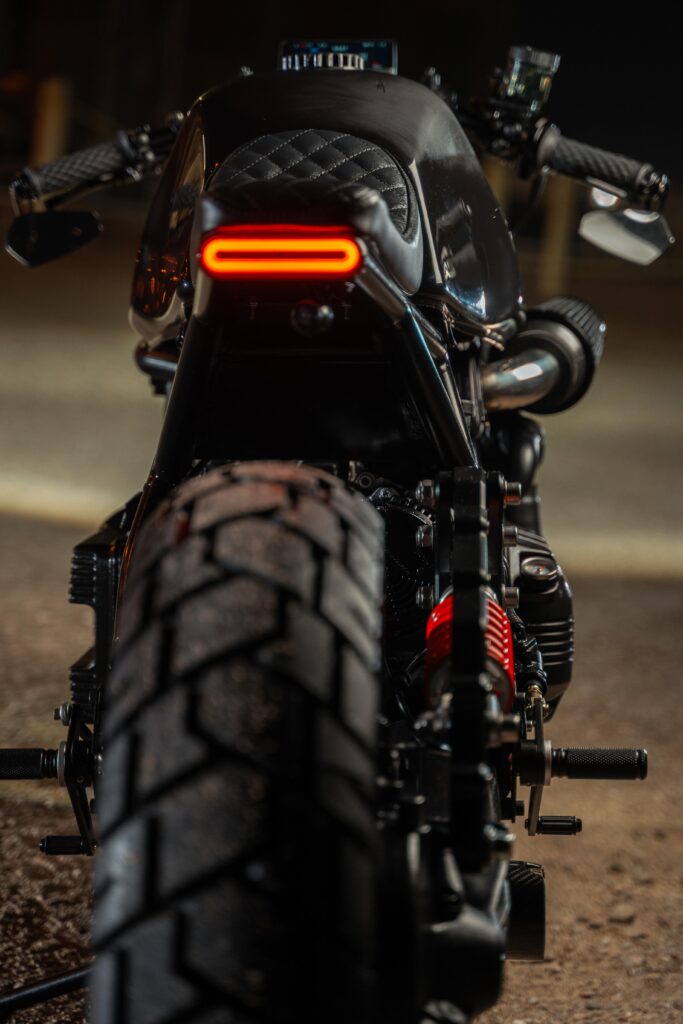
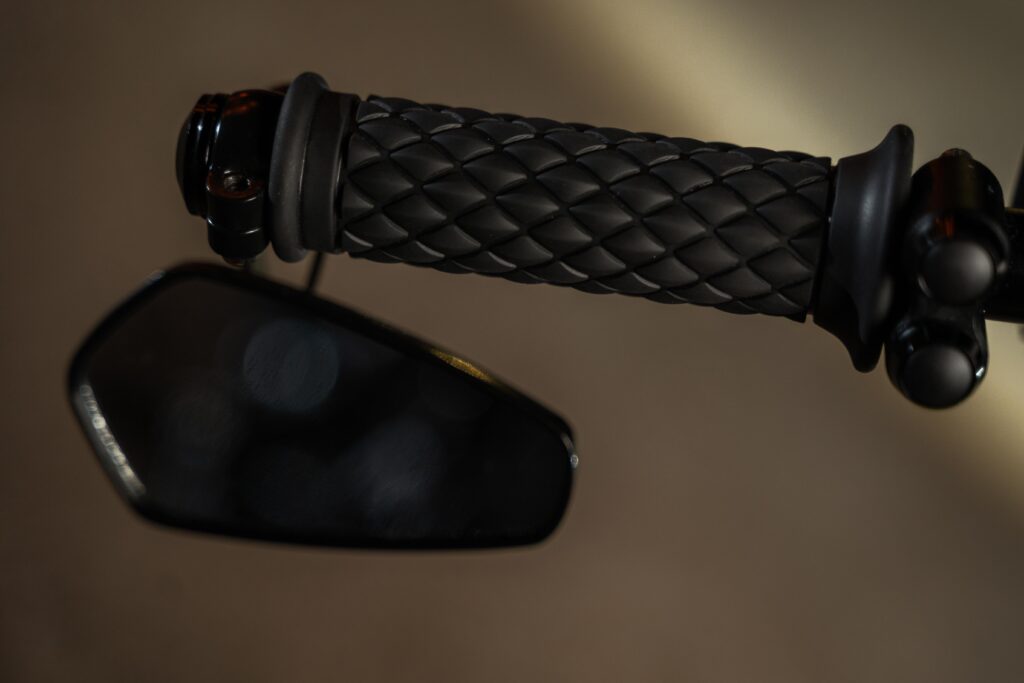
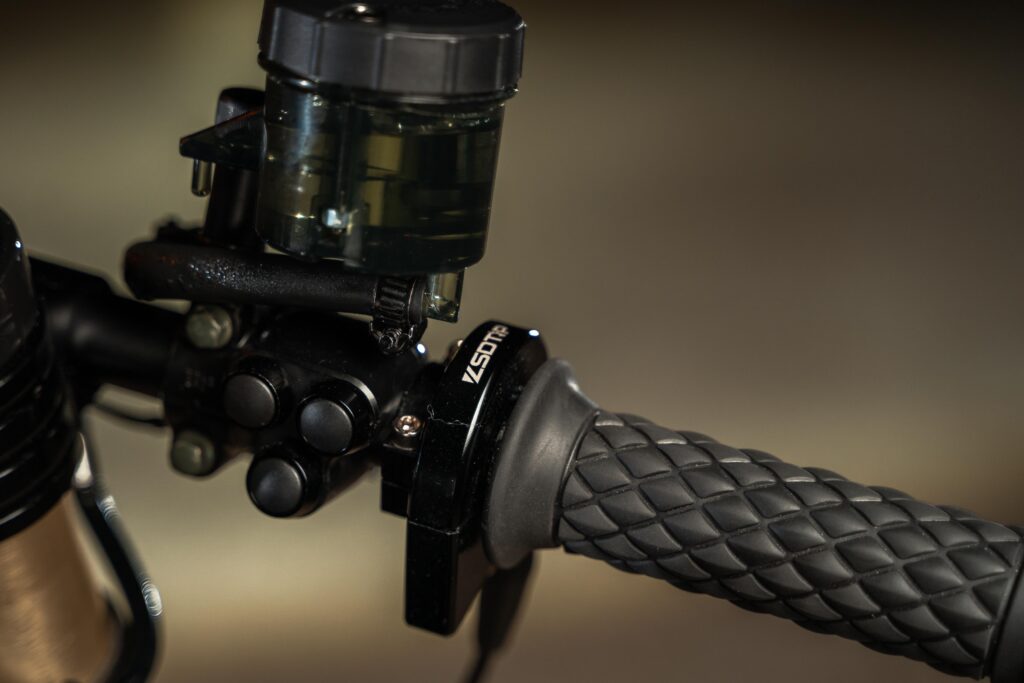
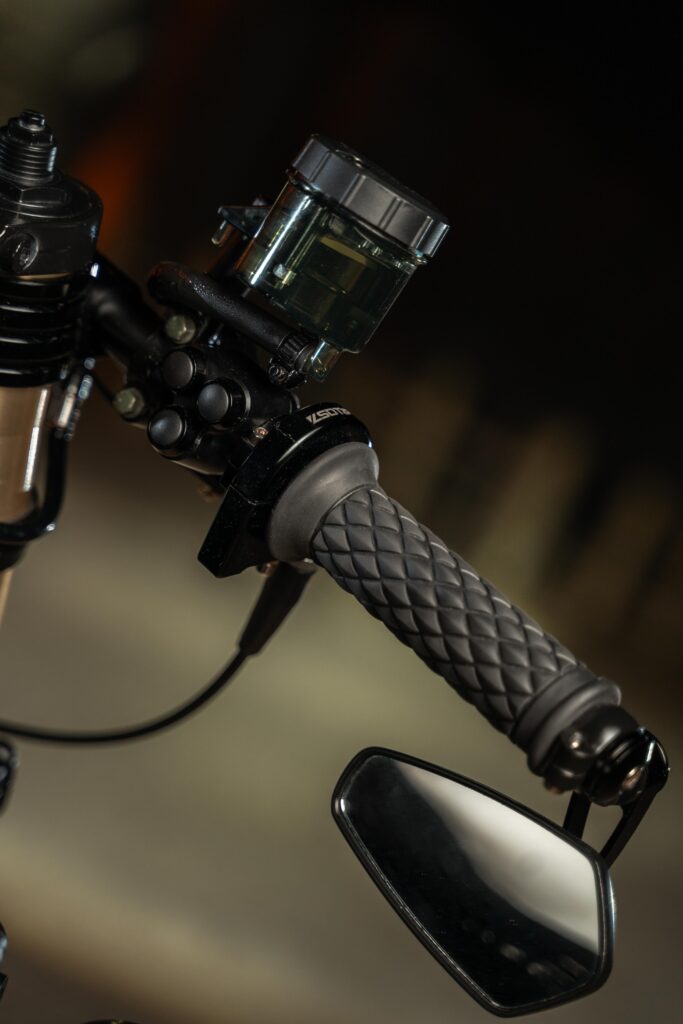

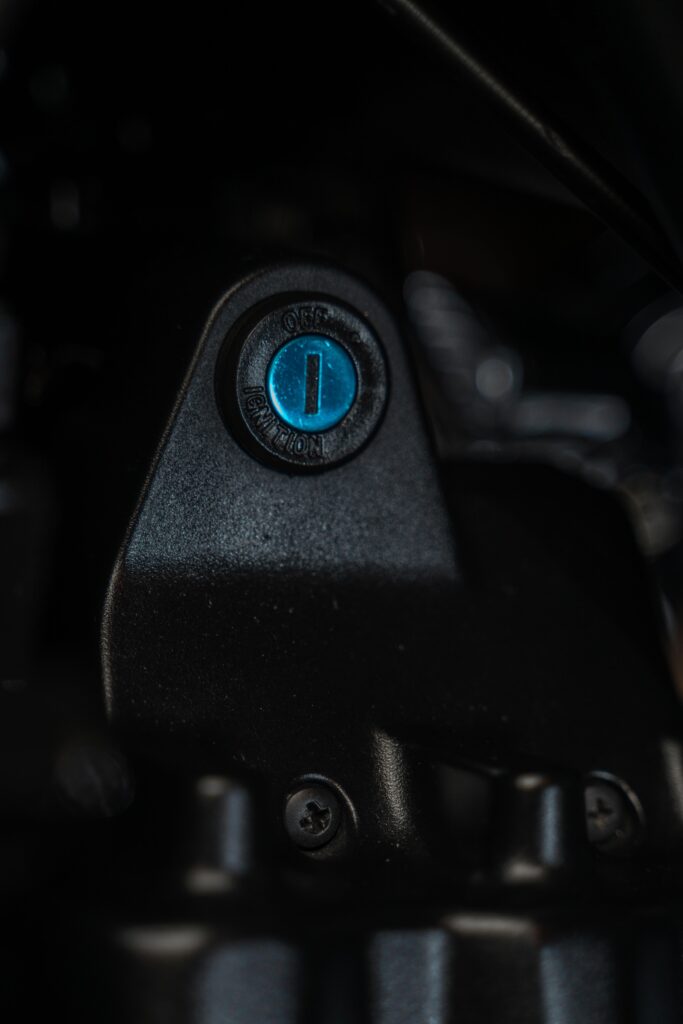
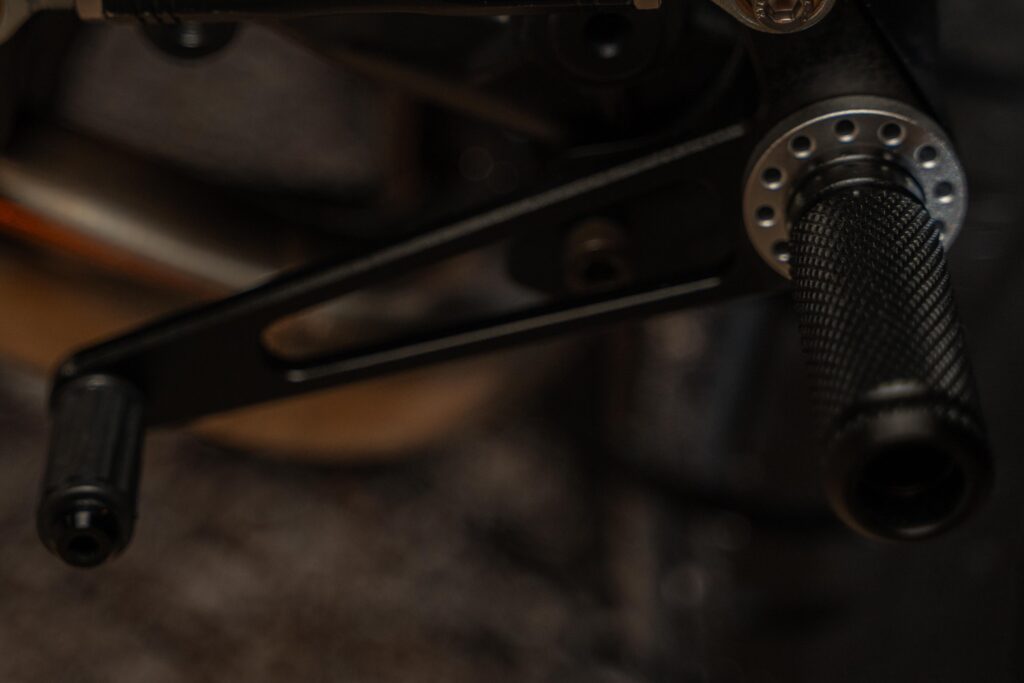
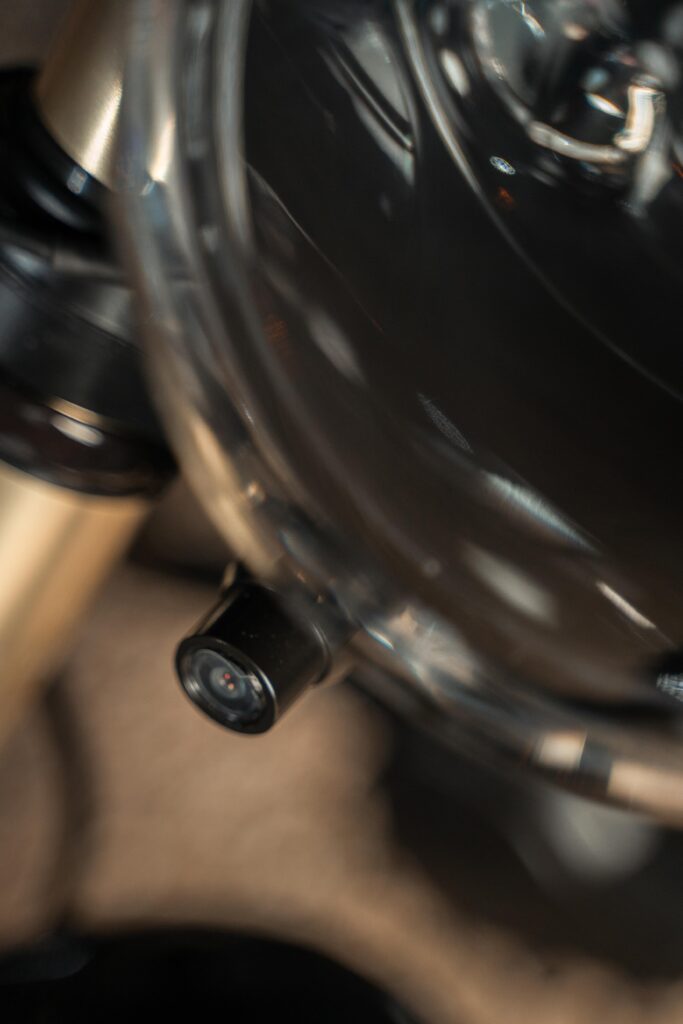
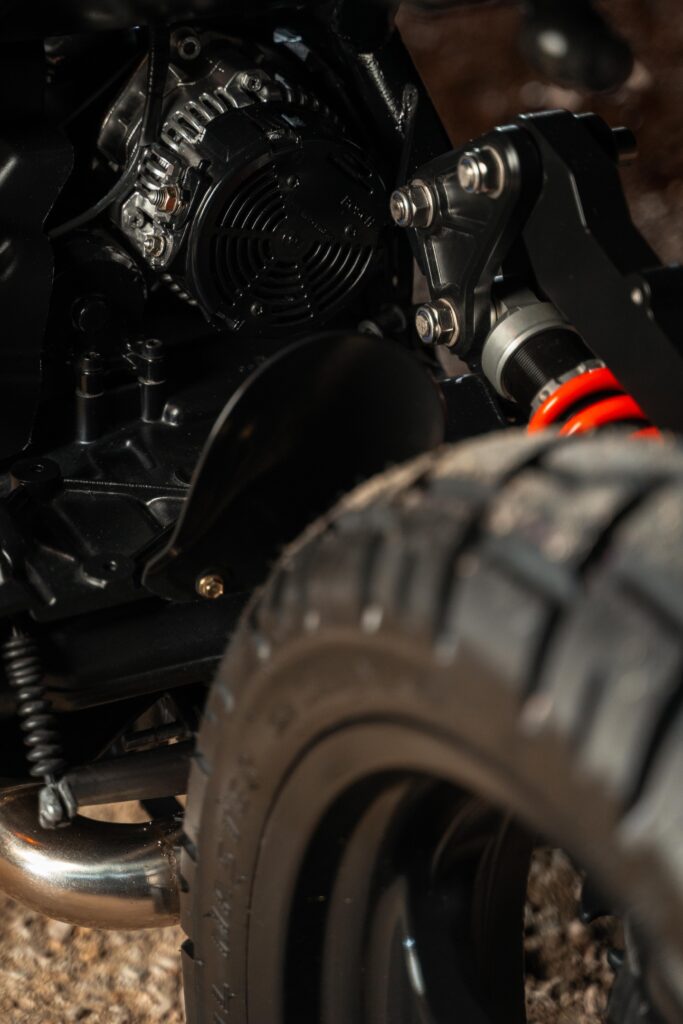
Disclaimer
This article is based on information and build details shared by the original builder, Arnas. All parts, features, and technical updates were described by the builder and reviewed for clarity. The motorcycle shown is owned and modified by the builder.
Photos, brand names, and product mentions are used only to explain the custom work. The article is written for motorcycle fans and is not meant as technical advice or legal guidance. Riding conditions and road laws may vary by location.
The purpose of this article is to highlight personal craftsmanship and to support the custom motorcycle community through accurate and respectful storytelling.
About the Builder: Arnas (@nakromedia)
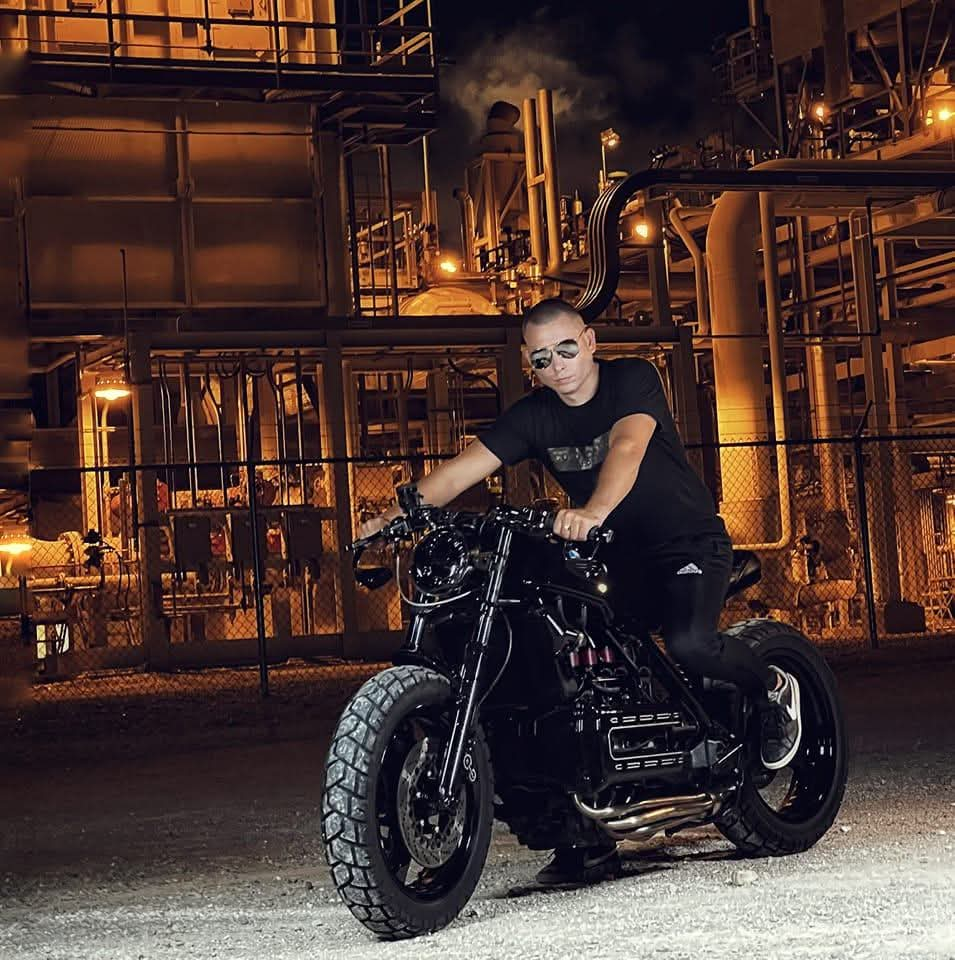
Arnas is a custom motorcycle builder from Illinois. He has built many café racers and scramblers, each with a personal style and careful planning. His interest in motorcycles began during childhood while helping his father repair bikes and cars. That early experience shaped his skills and deepened his connection to machines.
He became inspired to build custom BMW café racers after seeing one for the first time. The clean lines and strong frames of the K-series models matched his style. Since then, he has continued to build projects that mix old structure with modern features.
Arnas is also a photographer. He captures his work in detail, showing every part of each build. His photos help tell the full story of each motorcycle. For more of his work, visit his Instagram profile at @nakromedia.

